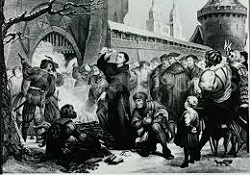




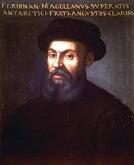










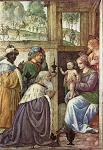
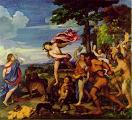
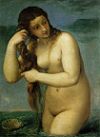
1520 An infected African slave spreads smallpox to Mexico on a Spanish ship, decimating the pop., spreading to Central Am. and the Incan Empire in time to soften them all up for Spanish conquest. Roman Catholic Europe has a sugar situation it can't handle? This year Europe is introduced to Protestantism; Martin Luther (1483-1546) pub. 24 bestselling works all in one year, incl. the "big three" pamphlets Address to the Christian Nobility of the German Nation, Of the Liberty of the Christian, and On the Babylonian Captivity of the Christian Church (Oct. 6), which contains the soundbytes: "Whether I will it or not, I become wiser every day, urged on as I am by so many illustrious masters. Two years ago, I attacked indulgences, but with so much indecision and fear, that I am now ashamed of it. It is not, however, to be wondered at, for I was alone when I set this stone rolling"; "I denied that the papacy was of Divine origin, but I granted that it was of human right. Now, after reading all the subtleties on which these gentry have set up their idol, I know that the papacy is none other than the kingdom of Babylon, and the violence of Nimrod the mighty hunter. I therefore beseech all my friends and all the booksellers to burn the books that I have written on this subject, and to substitute this one proposition in their place: The papacy is a general chase led by the Roman bishop, to catch and destroy souls"; they get quickly distributed all over Europe - and the caca soon hits the fan among his loving Catholic brethren down at the Sunset Grill? On Jan. 18 the Battle of Lake Asunden (near Borgesund) sees Christian II along with a large army of French, German, and Scottish mercenaries defeat a peasant army; on Jan. 19 the Battle of Bogesund on icy Lake Asunder near Bogsund sees Christian II's army led by Otte Krumpen (1473-1569) intercepted by a force led by Swedish regent Sten Sture the Younger (b. 1492), who is hit in the leg by a cannonball, killing his horse, causing his men to scatter, after which he dies on icy Lake Malaren on Feb. 5 of his wounds while retreating to Stockholm near Lake Malar, and on Nov. 4 after conquering Stockholm, Christian (Kristian) II (1481-1559) of Denmark and Norway is crowned king of Sweden, forcing it back into the Kalmar Union, knighting Krumpen; too bad, on Nov. 7-9 Christian II stages the Stockholm Bloodbath (Massacre) of 80-90 people (mostly nobility and clergy supporting Sten Sture the Younger incl. Eric Vasa) after reneging on a promise of gen. amnesty, causing them to rally behind Gustav Vasa (Gustavus Wasa) to oust the bloody Indian giver. On Mar. 10 Thomas Howard, 3rd Duke of Norfolk, Earl of Surrey (1473-1554) (uncle of Anne Boleyn) is appointed lord deputy of Ireland, with orders from Henry VIII to use persuasion rather than violence, facing the thankless task of pacifying the rival factions of the Earl of Kildare and Earl of Ormonde, sending letters demanding money and troops; he is recalled at the end of 1521 to take command of the English fleet for naval operations against France. Fun in the sun of Mexico NOT, or How 500 white men conquered 7M-30M red men suffering from auto-reverse racism, and reduced their pop. to 3M in 50 years? In Mar. displeased at the resistance of Spanish conquistador Hernan Cortes (Hernán Cortés) (1485-1547) to his authority as gov. of Cuba, Diego Velazquez sends an expedition under Panfilo de Narvaez (Pánfilo de Narváez) (1470-1528) from Havana, which lands at San Juan de Ulua on Apr. 23 and captures Cempoala; in May Cortes leaves Tenochtitlan under the protection of Pedro de Alvarado and 200 men, then defeats Narvaez on May 26 and takes him prisoner at Vera Cruz, persuading his men to join him. On Apr. 9 a Portuguese embassy led by Dom Rodrigo de Lima arrives in Massawa, Ethiopia, meeting with emperor Dawit II on Oct. 19, who tells him that the Muslim threat to Ethiopia is kaput, and he finally leaves in 1526. On May 20 20-y.-o. Netherlands-raised HRE Charles V leaves Spain to visit his new empire in Germany after squeezing his alienated Spanish subjects in Castile for money twice starting in 1517; he first goes to Aix-la-Chapelle to be crowned HRE; after the communes or local councils in the Castilian towns grow fearful of the rise of the power of the nobles and the crown, the War of the Communidad (Comunero Rebellion) breaks out in Castile against Charles V the absentee king's rule ("the largest urban rebevolt in early modern Europe" - Bonney) when the communes form the Santa Junta (Holy League) in Avila in June, profiting by the nobles looking the other way in hopes of profiting from the anarchy, causing Charles V's regent to send an army that stupidly burns the Medina del Camp, causing more towns to join the rebellion in N Spain; Juan de Padilla (1490-1521) starts an uprising in Toledo, while the Santa Junta attempts to gain the support of Charles V's old mother Mad Joanna, claiming that she isn't really insane but that Charles V is keeping her incommunicado; too bad, the radicals take over, causing the nobles to drop support. On June 7-24 Francis I and Henry VIII meet at the Field of the Cloth of Gold on Balinghem Plain between Guines and Ardres near Calais to sign a commercial treaty and discuss uniting against Charles V; despite splendid banquets and tournaments and gorgeous trappings, Henry VIII declines, and later allies with Charles, who visits him at Dover and Canterbury. Holy bullshit? On June 15 Leo X's 41-point papal bull Exsurge Domine condemns pesky freethinker Martin Luther as a heretic, comparing him to a fox and a boar, and o*rders him to recant his views on that reformation thang within 60 days while calling for the burning of all his writings; after it backfires as a way to pull Luther's support from under his feet, on Dec. 10 Luther defiantly burns the bull, er, papal B.S., er, bull, along with the canon law near the Luther Oak in Wittenberg; the Catholics now begin calling Luther the Antichrist (forgetting the pagan Roman emperors and Muhammad), while the Protestants begin calling the pope the Antichrist; Leo X's main man Johann Maier von Eck (1486-1543) goes to Rome then returns to Germany as papal legate to enforce the bull. Like a cheating husband who won't go away? In June Cortes returns to Tenochtitlan, where Montezuma II always gets a kick out of watching Spanish soldiers play cards, and observes Aztecs (Mexica) writing with lead crayons (pencils?), but this time the cocoa bean-bartering Aztecs have had it up to there with Cortes and his cruel lt. Alvarado, who attacked warriors during religious celebrations, and believing their king has lost his aura, on June 30 they stone Montezuma II while trying to persuade them to kiss white Spanish butt from the palace roof (he dies on July 3), then trap and cut off Alvarado and his men, destroy the three bridges leading out of the island city, and siege them, but Alvarado makes a portable bridge out of ceiling beams and sneaks out at midnight; too bad, he is spotted halfway across, saves his life by jumping over Alvarado's Leap in the causeway, and loses three-fourths (800) of his men killed or captured (later used for sacrifices to the war god) before escaping and regrouping with Cortes under a huge ceiba (silk-cotton) (kapok) tree in what becomes known as La Noche Triste (the Sad Night), in which Cortes sits under the tree and weeps; after making sure his shipbuilder Martin Lopez is still with him, he says, "Okay, let's go, for we lack nothing", and they head back to their race-traitor allies in Tlaxcala; meanwhile Montezuma II (b. 1479) is succeeded as Aztec king by his younger brother Cuitlahuac (Cuitláhuac) (1476-120), who prepares to finish Cortes off, but on July 7 Cortes kicks their butts in the Battle of Otumba, with 100K-200K Aztecs getting their butts kicked by 500 Spaniards and a few hundred Tlaxcalans, losing only 73 Spanish KIA; in late Sept. after a reign of 80 days Cuitlahuac dies of the smallpox, and is succeeded by Montezuma II's nephew Cuauhtemoc (Cuautehmóc) (Cuitlahuac) (d. 1521), the last Aztec ruler; Cortes returns to Tlaxcala, receives reinforcements, and ends up making Texcoco his base on Dec. 31 while he prepares to return with 600 men and tens of thousands of native allies, having a stroke of genius and building a fleet of 13 40-ft. brigantines on land, which he has disassembled to be hauled overland by 8K native porters back to Tenochitlan for a final siege. Nothing beats jellin' like Magellan? On Sept. 20 after spending more money on sherry than weapons, Ferdinand Magellan (1480-1521) leads an expedition of 237 men sailing from Spain in five small ships incl. flagship Trinidad, Concepcion, San Antonio, Victoria, Santiago in search of a westerly route to the Spice Islands in Indonesia (the Indies), which ends up circumnavigating the globe, starting by crossing the equator on Nov. 27 and sighting South Am. on Dec. 6, reaching modern-day Rio de Janeiro on Dec. 3, then sailing S to Rio de la Plata in Feb. 1520, and overwintering in Puerto San Julian in Argentina, surviving a mutiny on Easter (Apr. 1-2); on Oct. 21, 1520 they reach Cape Virgenes and begin navigating the Magellan Strait between South Am. and Tierra del Fuego (later site of the city of Punta Arenas, Chile, southernmost city on Earth); after mistakenly believing that native Tehuelches are giants, he names Patagonia from the Spanish word pata or feet, "Land of the Bigfeet"; actually they avg. 5'11", compared to 5'1" for the Spaniards, but it takes until the end of the 18th cent. to debunk the myths; on Nov. 28 after one is wrecked in a storm and the other returns to Spain, three of the five ships sail into the Pacific Ocean, which Magellan names because of how calm and peaceful it is compared to the Atlantic (how could he know about them hurricanes?); 98 days later they reach the Philippine Islands. With the Roman Catholic Church splintering, the Ottomans see their chance? On Sept. 22 sultan (since 1512) Selim I the Grim (b. 1465) dies while preparing an expedition against pesky Hospitaler-held Rhodes after expanding the Ottoman Empire from 2.5M sq. km to 6.5M sq. km, leaving a bunch of Turkish and Persian poetry, and a royal treasury filled to the brim and locked with his own seal and the soundbyte: "He who fills the treasury more than this may use his seal to lock it" (no one takes him up until the empire collapses four cents. later?), and on Sept. 30 his son Suleiman (Suleyman) I (the Magnificent) (the Law Giver) (1494-1566) (known for wearing a giant turban) becomes Ottoman sultan #10 (until Sept. 7, 1566). Ulrich Zwingli (1484-1531) keeps Zurich from sending mercenaries to the wars, and gets permission from the city's gov. council to preach the "true divine Scriptures", which he claims are against the practice of celibacy; he gets the church council to forbid all religious teachings not based on the Bible, incl. the stricture against eating meat during Lent - now he's done it? The Anabaptist ("Re-Baptizer") Movement begins in Germany under pastor Thomas Muntzer (Müntzer) (1489-1525), who preaches that it's the "end of all ages", stirring up the unsuccessful Peasant Revolt in 1524; in this decade Austrian South Tirol reformer Jacob Hutter (1500-36) founds the pacifist communistic Hutterites, a group of Anabaptists in Moravia, who after his execution end up moving to the U.S., settling in the Dakotas, Montana, and Alberta, Canada, and living communally. 300 African slaves arrive in Cuba. The Portuguese send trader Thome (Thomé) Pires to Peking (returns 1521). English scholar Robert Whittington (Wittinton) (1480-1553) writes the soundbyte about future Roman Catholic saint Sir Thomas More: "More is a man of an angel's wit and singular learning. I know not his fellow. For where is the man of that gentleness, lowliness and affability? And, as time requireth, a man of marvelous mirth and pastimes, and sometime of as sad gravity. A man for all seasons." Henry VIII orders the building of bowling lanes in Whitehall Palace. The Wailing (Western) Wall, all that's left of the Jewish Temple of Jerusalem is uncovered under a dung heap and becomes a place of permanent prayer for Jews that they really love to kiss? The word "con" in the sense of directing the steering of a ship is first used; it "undoubtedly had an affinity to cunning". Albrecht Durer travels in the Netherlands this year and next, where he studies Flemish masters incl. the van Eycks, causing him to make his colors more rich and subtle in the last stage of his career. Antonio da Sangallo the Younger (1484-1546), nephew of Giuliano da Sangallo becomes chief architect of St. Peter's Basilica. The Mannerism movement in art, a reaction to the classical straight jacket of Leonardo da Vinci's and Raphael's harmony and proportion, featuring contorted poses and harsh lighting and coloring begins in Italy, and spreads to the Netherlands (ends 1600) - all that stuff that was cute when he was little ain't cute no more? Architecture: Michelangelo finishes the Medici Chapel in Florence. Inventions: German gunsmith August Kotter invents the spirally-grooved rifle barrel for straighter shooting - welcome back, Kotter? About this time the Violin emerges in its modern form in the region of Milan, Italy. The Wheel Lock is invented in Italy, leading to the creation of single-handed pistols. About this time the lager method of brewing is invented in Bavaria, Germany after Saccharomyces eubayanus yeast is brought back from the beech trees in Patagonia in South Am. and brewers fuse it with their yeast. Science: Scipione del Ferro (1465-1526) finds the complete solution to the cubic equation. Swiss walking wonder medical student Philippus Paracelsus (Lat. "Greater than Celsus") (Aureolus Theophrastus Philippus Bombastus von Hohenheim) (1493-1541) wanders through Europe, and introduces Laudanum (spiced wine and opium) as a painkiller and cure-all, blissfully unaware of its addictive properties - the original Timothy Leary? Nonfiction: Henry of Ghent (1217-93), Summa Theologica (posth.) (Ghent). Niccolo Machiavelli (1469-1527), The Life of Castruccio Castracani of Lucca; about one of his heroes (1281-1328); Summary of the Affairs of Lucca; Discourse on the Reform of the Florentine Repub.. Art: Hans Baldung Grien (1484-1545), Nativity. Antonio da Correggio (1489-1534), The Ascension of Christ (San Giovanni Evangelista, Parma) (1520-24); power tour of chiaroscuro fresco. Lucas Cranach the Elder (1472-1553), Portrait of Luther. Matthias Grunewald (1465-1528), St. Erasmus and St. Maurice. Veit Stoss (1445-1533), Crucifix (sculpture in the Sebalduskirche in Nuremberg). Titian (1477-1576), Bacchus and Ariadne (1520-3); painted for Duke Alfonso d'Este of Ferrara after Raphael is given an advance but dies; Venus Anadyomene (Venus Rising from the Sea) (1520-5); eventually owned by Queen Christina of Sweden. Births: Croatian Lutheran scholar Matthias Flacius Illyricus (d. 1575) on Mar. 3 in Labin. Polish king and grand duke of Lithuania (1548-72) Sigismund (Zygmunt) II Augustus (d. 1572) on Aug. 1 in Cracow (Krakow); only son of Sigismund I the Old (1467-1548); member of the Hapsburg Order of the Golden Fleece. German dramatist-poet and brewer Heinrich Knaust (d. 1580) on Aug. 31 in Hamburg; educated at the U. of Wittenberg. English statesman (chief adviser to Elizabeth I) William Cecil, 1st Baron Burghley (Burleigh) (d. 1598) on Sept. 13 in Bourne, Lincolnshire; son of Richard Cecil (-1552) and Jane Heckington; educated at St. John's College, Cambridge U.; known for his knowledge of Greek. Spanish conquistador-chronicler Pedro Cieza de Leon (León) (d. 1554) in Llerena. English mathematician-surveyor (inventor of the theodolite) Leonard Digges (d. 1559); father of Thomas Digges (1546-95). Ethiopian Solomonic emperor (1540-59) (Christian) Gelawdewos (Claudius) (Asnaf Sagad I) (d. 1559); younger son of Dawit II and Sabla Wengel. Portuguese writer Jorge de Montemayor (d. 1561) in Montemor, Coimbra. French explorer-colonizer Jean Ribault (Ribaut) (d. 1565) in Dieppe, Normandy. French Renaissance humanist-feminist poet ("La Belle Cordiere") Louise Labe (Labé) (d. 1566) in Lyon; after learning foreign languages in a convent school, she dresses in male clothing and fights as a mounted knight for the dauphin (Henry) at the Siege of Perpignan, and participates in tournament jousts in Lyon in honor of Henry II's visit, becoming known as "la belle Amazone". Roman Catholic theologian (Jewish convert) Sixtus of Siena (d. 1569). Dutch Flemish painter (in England) Hans Eworth (Ewouts) (Jan Euworts) (d. 1574). Dutch portraitist Sir Antonis (Antoon) Mor (Moro) (d. 1576) in Utrecht; discovered by Cardinal Granvelle, going on to make portraits of Granvele, the Duke of Alva, Mary I of England, William I the Silent of Orange et al. Italian Venetian School composer Andrea Gabrieli (d. 1586); father of Giovanni Gabrieli (1557-1612). French printer Christophe Plantin (d. 1589) in Saint-Avertin. Italian composer-lutenist Vincenzo Galilei (d. 1591) in Santa Maria a Monte, Tuscany; father of Galileo Galilei (1564-1642); experimentally discovers that the ratio of tension of two equal-length strings tuned an octave apart is 4:1. Fleming ambassador to Turkey (1555-62) Ogier Ghiselin de Busbecq (Augerius Busbequius) (d. 1592) in Comines. Deaths: Spanish courtier-ambassador Don Diego de Guevara (b. 1450) in Brussels. Scottish poet William Dunbar (b. 1460). Ottoman sultan (1512-20) Selim I the Grim (b. 1465) on Sept. 22 (sirpence or skin cancer): "A carpet is large enough to hold two sufis, but the world is not large enough for two kings." Portuguese explorer Pedro Alvares Cabral (b. 1467) in Santarem. Italian poet Cardinal Bibbiena (Bernardo Dovizi) (b. 1470). German cartographer Martin Waldseemuller (b. 1470) on Mar. 16. Mexican Aztec emperor Montezuma II (b. 1479) on July 3. Italian "Prince of Painters", "the New Apelles" Raphael (b. 1483) on Apr. 6 (Good Friday) in Rome; dies suddenly and unexpectedly on his birthday at age 37; "He was laid out in the room where he last worked, and at his head hung his painting of the transfigured Christ, which he had just completed for Cardinal de' Medici. The contrast between the picture, which was so full of life, and the dead body filled everyone who saw it with bitter pain." (a friend) Swedish regent (1513-20) Sten Sture the Younger (b. 1492) on Feb. 3 in Lake Malar. Spanish explorer Alonso Alvarez de Pineda (b. 1494) near Tampico, Mexico (KIA).

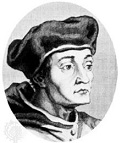

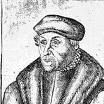
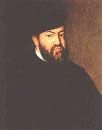
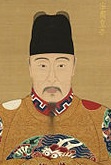


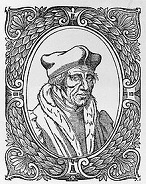

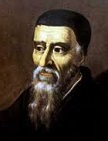
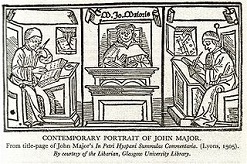
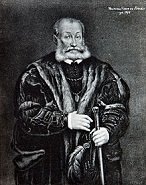

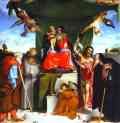
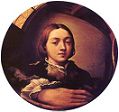
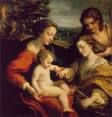

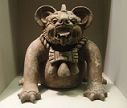
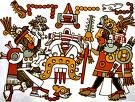
1521 Count to ten then lose your temper like a lion? On Jan. 3 after Martin Luther refuses to retract 41 of his 95 theses, Pope (since 1513) Leo X (1475-1521) issues the bull Decet Romanum Pontificem, excommunicating him; given safe passage by HRE Charles V, Luther travels to the Imperial Diet of Worms (sounds yummy?) (electors, princes and nobles, and town delegates) to argue his case, arriving on Apr. 16, triumphantly having his say, with the soundbyte: "Since Your Majesty and your lordships desire a simple reply, I will answer without horns and without teeth. Unless I am convicted by Scripture and plain reason, I do not accept the authority of popes and councils, for they have contradicted each other"; after being cross-examined by papal nuncio Cardinal Alexander, he leaves in one piece on Apr. 25, his safe conduct pass good for 21 days; on Apr. 26 after papal rep. (appointed cardinal in 1536) Girolamo (Hieronymous) (Jerome) Aleandro (Aleander) (1480-1542) leads the opposition to him, the Edict of Worms bans Luther and his writings from the Holy Roman Empire, prohibits all new doctrines, and declares Luther an outlaw that anybody can kill after May 14; a bull issued by Pope Leo X follows on June 16, amounting to a death warrant; in an edict to Netherlanders, the pope's man HRE Charles V states: "As it appears that the aforesaid Martin [Luther] is not a man, but a devil under the form of a man, and clothed in the dress of a priest, the better to bring the human race to hell and damnation, therefore all his disciples and converts are to be punished with death and forfeiture of all their goods"; on his way back to Germany Luther is "kidnapped" on May 4 under orders of his protector Elector Friedrich (Frederick) III the Wise (1463-1525) of Ernestine Saxony (whose brother John of Saxony is a Lutheran), and hidden in his castle at Wartburg for a year for safekeeping, pretending to be neutral but consenting to end worship of his 19K+ saints and relics in 1523, along with the Catholic mass; meanwhile Luther's more radical associate Andreas Rudolph Bodenstein von Karlstadt (Carlstadt) (Karolostadt) (AKA Brother Andrew) (1486-1541) continues the Reformation in Wittenberg in Luther's absence, pushing for complete separation from the Church, and showing just what unfettered Bible reading can do to a person brought up Catholic?; Luther's books are burned in Rome, and in retaliation the faculty and students at the U. of Wittenberg burn the papal constitutions, the canon law, and works of scholastic theology outside the Elster Gate; Luther adds the pope's excommunication bull to the burning heap; while in hiding Martin Luther translates the New Testament into his most unwormly German. On Feb. 28 after discovering the Northern Mariana Islands (Guam, Rota, Saipan, Tinian, Asuncion), and naming them "Ladrones" (Sp. "thieves") for the thievish practices of the native Chamorros, Magellan and his men reaching Guam ("land of sails", named for their lateen sails) and find supplies, then take off and sight the Philippine Islands; on Apr. 27 (dawn) Magellan is KIA in the Battle of Mactan with the islanders led by chief Lapu-Lapu before he can circumnavigate the globe; one of the three remaining ships is abandoned, and the last two set sail, with the Victoria commanded by Magellan's 2nd-in-command Juan Sebastian de Elcano (del Cano) (1476-1526), who changes Magellan's plan and sails W into the Indian Ocean, reaching the Spice Islands on Nov. 6 with 115 crew, sailing around the Cape of Good Hope on May 6, 1522 and limping home on Sept. 6, 1522 with 18 aboard, making a small net profit from their cargo of 26 tons of cloves and cinnamon. On Apr. 15 the College of Sorbonne in Paris formally condemns the teachings of Martin Luther. On Apr. 20 after a 16-year reign in which he overtaxed his people and let bandits flourish while he decimated his court officials for questioning his weird ways and got off on travelling around the country incognito, allowing court eunuchs to entrench themselves inextricably, emperor (since 1505) Ming Zhengde (b. 1491) dies after his pleasure boat capsizes, and on May 27 his 15-y.-o. cousin Zhu Houcong becomes Jiajing ("admirable tranquility") (1507-67), Ming emperor #11 (until Jan. 23, 1567), continuing the same. On Apr. 23 the Revolt of the Communeros (begun 1520) is crushingly defeated by the royalist supporters of Charles I in the Battle of Villalar in Valladolid province, and Juan Padilla and his two main lts. are executed on Apr. 24; royal absolutism settles into Spain for cents. in reaction. On May 17 Henry VIII's rival (leader of the disaffected nobles pissed-off at the way the court is run by low-born bums like Thomas Wolsey) Edward Stafford, 3rd Duke of Buckingham (b. 1478) is executed as a traitor, ending the line (until 1617) - putting a stevie nicks in it? On May 26 Hernan Cortes sieges Tenochtitlan, and on Aug. 13 he defeats the Aztecs after 80 days of starving the 250K pop. (a tactic unknown in their history?), reducing them to eating lizards and grass, capturing 800 women and children foraging at night for food, then taking the city street by street until the Aztecs, reeling from starvation, white man's measles and smallpox make their last stand at the stacked pyramid of Tlatelolco, sister city of Tenochtitlan to the N; the Aztec Empire (founded 1428) ends (7M-30M people torpedoed by a few hundred Satanists, er, Saints, er, Spaniards?), and the Spanish Empire in Am. begins with the forceful seizure of Mexico, which becomes known as New Spain (until 1821), with Cortes as viceroy #1 (until Dec. 24), followed by Cristobal (Cristóbal) de Tapia (until Dec. 30), followed by Cortes again (until Oct. 12, 1524) after Tapia clears him of misconduct; Cortez sees bison in Montezuma's menagerie; in 1524 Mexico City is founded on the razed ruins of Tenochititlan after the lake is filled-in by Aztec slaves; king #4 (since 1487) Cosijoeza (Cocijoeza) (-1529) of the nearby Zapotecs in SE Mexico hears of the Spanish V and decides to lay low to avoid the same fate, allying with the Mixtecs (Mixteca) in modern-day Oaxaca, Guerrero, and Puebla, but that doesn't stop the Spanish from attacking them next year, and subduing them by 1527, the Zapotec bat god and Mixtec jaguar god proving impotent against Spanish cannon, firesticks, and biological warfare. In May Spanish knight Ignatius Loyola (1491-1556) is badly wounded in the legs by a cannonball in a battle against the French at Pamplona (Pampeluna), and undergoes a religious conversion at home in the castle of Loyola in N Spain (after receiving the last sacraments and claiming to see the Blessed Virgin Mary carrying the Infant Christ in her arms?), then vowing to lead a life of absolute chastity and devotion to her (perhaps the cannonball smashed more than two legs?); in 1522-4 he writes Exercitiae (Spiritual Exercises), getting him in trouble with the Inquisition for mysticism - the Roman Catholics produce their answer to Luther? In July Juan Ponce de Leon (b. 1460) dies in Havana, Cuba, having failed to capitalize on his royal patent to colonize Fla., although he introduces cattle and swine, which run wild in the swamps; after his death rumors circulate that he was searching in Fla. for the Fountain of Youth - there weren't enough wealthy swine-chomping Jewish senior citizens yet? On Aug. 28 after King Hieronymus of Hungary pleads in vain for Western aid against the advancing Ottoman hordes, and Charles V is too busy with the pesky Lutherans, the French and other imperial matters, Belgrade, "the key to Hungary" is conquered by the Ottoman Empire under Sultan Suleiman I, who makes big plans for further penetration of the degenerate West, beginning with Hapsburg lands along the Danube River. In Sept. the French, who had been supporting the communeros with designs on Navarre invade it along with the Low Countries, beginning the Italian (Four Years') War (ends 1526), the first of ? wars between HRE Charles V and Francis I of France until 1559; the French take Pampeluna and Fontarabia, after which uncrowned HRE Charles V's imperial forces reverse them and attack N France, then are stopped in turn on Nov. 19 by Pierre Terrail, Chevalier (Signeur) de Bayard (1473-1524) in C France at the Siege of Mezieres (Mézières); Charles V allies with England and the pope (who needs him to fight Martin Luther and his German princes), while Francis I allies with Venice; meanwhile Francis I's lavish livestyle of several thousand civil and personal servants, retinue, entertainments, construction and military adventures causes France to incur its first nat. debt and borrow money. On Oct. 11 Pope Leo X declares English king Henry VIII the Defender of the Faith (Fidei Defensor) for his June pub. Assertio Septem Sacramentorum (Defense of the Seven Sacraments) refuting Martin Luther, becoming the #1 anti-Lutheran polemic of the cent., going through 20 eds.; meanwhile on Dec. 1 Leo X (b. 1475) dies of a winter chill (after writing sometime in his career "It has served us well, this myth of Christ"?), allowing Francesco Maria I della Rovere to recover his duchy of Urbino; Martin Luther replies to Henry VIII in 1522 with the book Against Henry, King of the English (Contra Henricum Regem Anglie), causing Thomas More to reply to him in 1523 with the book Responsio ad Lutherum; meanwhile Martin Luther takes advantage of this plus Charles V's military diversion to initiate public worship in Germany, with liturgy in vernacular German, and to preach along with Ulrich von Hutten against Jakob Fugger for lobbying the papacy to drop the age-old medieval prohibition against charging interest on loans - a rare natural death for a Medici? On Oct. 25 HRE Charles V bans wooden bldgs. in Amsterdam. On Nov. 20 the Arabs blame a lack of water in Jerusalem on the Jews making wine. Greeeen-acres is the place for me? On Dec. 13 king (since Oct. 25, 1495) Manuel I the Fortunate (b. 1469) dies, and his son Joao (John) III (the Pious) (the Grocer) (1502-57) becomes king #15 of Portugal (until June 11, 1557) at the height of its grate powah, piously establishing the Inquisition in 1536 and riding it over the hump to the start of its downward slope, going on to preside over the colonization of Brazil, abandoning Muslim territories in North Africa in favor of trade with India and investment in Eurpe, improving trade relations with England, Flanders, and the Baltic and Rhineland regions, while securing a monopoly over the spice trade (cloves and nutmeg) from the Maluku Islands, gaining then nickname "the Grocer King"; during his reign the Portuguese become the first Euros to make with China (Ming Dynasty) and Japan (Muromachi Period); despite unleashing the Inquisition, he supports humanists incl. poet-playwright Gil Vicente (1465-1536), mathematician Pedro Nunes (1502-78), and physician Garcia de Orta (d'Orta) (1501-68); when he dies the Portuguese empire has reached 4M sq. km. (1B acres). Scottish bishop Gavin Douglas is exiled to England. Gustavus I Vasa resists Danish rule, and captures Stockholm from the Danes. Poland grants Duke Albrecht I of Prussia a 4-year truce in its war with his Teutonic Order, and the dispute is referred to HRE Charles V, while Albrecht continues war preparations. HRE Charles V grants his Roman Catholic brother Ferdinand Hapsburg (later HRE Ferdinand I) possessions and rights in Austria, making him gov. of the duchy of Wurttemberg to check the spread of the pesky Reformation; Ferdinand marries Anne of Hungary, sister of Louis II of Bohemia and Hungary, and daughter of Ladislas II of Hungary and Bohemia, while Ladislas II of Hungary marries Mary of Austria. Thomas More is knighted. Ascanian prince Wolfgang of Anhalt-Kothen (Anhalt-Köthen) (1492-1566) meets Martin Luther at the Diet of Augsburg, claims that "He gained my heart", and goes Lutheran, introducing the Reformation in Anhalt-Kothen in 152, and Anhalt-Bernburg in 1526, becoming the 2nd and 3rd countries after the electorate of Saxony to officially adopt Protestantism. Bartolome de las Casas tries unsuccessfully to found a peaceful settlement for natives at Cumana (Cumaná) on the Venezuelan coast, becoming the first Spanish city in South Am. The Portuguese allied with Hormuz invade and seize Bahrain from Jabrid ruler Migrin ibn Zamil (-1521), who is KIA; the Portuguese rule Bahrian until 1602. French lawyer Bartholomew Chassene defends some rats that had destroyed a barley crop, arguing that "evilly disposed cats" owned by the prosecutors had intimidated them from appearing in court, and demanding a cash guarantee; when the prosecution refuses, the case is dismissed. Spanish slaver Francisco de Gordillo and his buddy Pedro de Quejo explore the E coast of Ga. as far N as S.C. in search of fresh meat. Silk manufacture is introduced to France. The College of Sarbonne in Paris condemns a book by reformer (humanist) Roman Catholic theologian Jacques Lefevre d'Etaples (Jacques Lefèvre d'Étaples) (1455-1536) rejecting the view of the Three Marys of the Gospels being the same person; in 1523 he pub. a French trans. of the New Testament, followed by the whole Bible in 1530, helping launch Protestantism and making a fan of William (Guillaume) (Guilhem) Farel (1489-1565), who becomes an evangelist and founds the Reformed Church in Switzerland; in 1525 the theology faculty of the U. of Paris forbids further translations of the Bible. Architecture: Chateau de Chenonceaux in the Loire Valley (begun 1513) is completed for royal tax collector Thomas Bohier; Francis I latches onto it in 1535. Science: Bologna surgery prof. Jacopo Berengario da Carpi pub. a Commentary on Mondino containing a number of anatomical discoveries, incl. the action of the cardiac valves, and the fact that the kidney is not simply a sieve; he coins the term "vas deferens". Nonfiction: Niccolo Machiavelli (1469-1527), Dell' Arte Della Guerra. John Major (1467-1550), Historia Majoris Britanniae, tam Angliae quam Scotiae (Paris); De Gestis Scotorum (Paris); first major history of Scotland since Andrew of Wyntoun (1350-1425); written in Latin. Philip Melanchthon (1497-1560), Loci Communes; pro-Lutheran. Piri Reis (1465-1554), Book of the Sea (Kitab-i Bahriye). Art: Lorenzo Lotto (1480-1556), Madonna and Child with Saints; Christ Leaving His Mother in the Temple; San Bernardino Altarpiece. Il Parmigianino (1503-40), The Mystic Marriage of St. Catherine and Christ; the work of an 18-y.-o. kid? Palma Vecchio (1480-1528), Adoration. Births: German Lutheran Albertine Wettin duke of Saxony (1541-7) and elector of Saxony (1547-53) Maurice (Moritz) I (d. 1553) on Mar. 21 in Freiberg; eldest son of Henry IV the Pious (1473-1541) and Katharina of Mecklenburg; elder brother of Augustus I (1526-86); cousin of Elector John Frederick I (1503-54). German Counter-Reformation Jesuit theologian ("the Second Apostle of Germany") (St.) Peter Canisius (Pieter de Hondt) (d. 1597) on May 8 in Nimwegen, Netherlands; first German to join the Jesuits (1543); canonized in 1925; feast day: Apr. 25. Italian duke of Parma and Piacenza #2 (1556-86) Ottavio Farnese (d. 1586) on Oct. 9 in Valentano; 2nd son of Pier-Luigi Farnese; grandson of Pope Paul III; brother of Cardinal Ranuccio Farnese (1530-65). Japanese warlord (daimyo) Takeda Shingen (d. 1573) on Dec. 1 in Kai Province. English queen consort (1540-1) Catherine Howard (d. 1542) (b. 1523?) in Lambeth, London; granddaughter of Thomas Howard, 2nd duke of Norfolk, who is poor, causing her to be raised by her grandmother the duchess of Norfolk. English rebel Sir Thomas Wyatt the Younger (d. 1554) in Chatham, Kent; son of Sir Thomas Wyatt (1503-42) father of the English sonnet. French La Pleiade poet-priest (bishop of Chalon-sur-Saone in 1578-94) Pontus de Tyard (Thyard) (Thiard) (d. 1605) in Bissy-sur-Fley, Burgundy; supporter of Henry III against the House of Guise. Deaths: Dutch composer Josquin des Pres (b. 1445) on Aug. 27 in Conde; composed 20+ masses. French-Flemish composer Josquin de Prez (b. 1450) on Aug. 27 in Conde-sur-l'Escaut (near Lille). German "Ship of Fools" author Sebastian Brant (b. 1457). English viceroy Sir Edward Poynings (b. 1459). Spanish explorer Ponce de Leon (b. 1460) in July in Havana. Florentine painter Piero di Cosimo (b. 1462). Portuguese king (1495-1521) Manuel I the Fortunate (b. 1469) on Dec. 13 in Lisbon. Italian pope (1513-21) Leo X Medici (b. 1475) on Dec. 1 in Rome. English traitor Edward Stafford, 3rd duke of Buckingham (b. 1478) (executed). Portuguese explorer-writer Duarte Barbosa (b. 1480) on May 1 in Cebu, Philippines; dies at the feast of Rajah Humabon; leaves The Book of Duarte Barbosa (1516?), an early example of Portuguese travel lit. Portuguese explorer Ferdinand Magellan (b. 1480) on Apr. 27 in the Philippines; KIA with natives. Chinese Ming emperor #10 (1505-21) Zheng De (b. 1491) on Apr. 20.





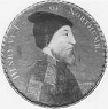




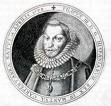
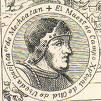
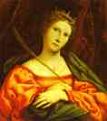
1522 On Jan. 9 Adrian Florensz Boeyens Dedel of Utrecht, inquisitor (regent) of Spain and HRE Charles V's Catholic tutor is elected Pope (#218) Adrian (Hadrian) VI (1459-1523), becoming the last "barbarian pontiff" (retaining his baptismal name); all popes will be Italian after this until Polish-as-a-pickle John Paul II (1978); he proceeds to try to reform the unreformable, and is hampered by a bout of plague hitting Rome, getting it himself. On Feb. 7 the Treaty of Brussels is signed by HRE Charles V, splitting the Hapsburgs into Spanish and Austrian branches, and granting his brother Ferdinand yet more possessions in SW Germany and the Tirol. On Mar. 22 Henry VIII makes "Red" Piers Butler, 8th Earl of Ormonde (1467-1539) (cousin of Thomas Butler, 7th earl of Ormonde, who died childless in 1515, after which he seized the estates) his lord lt. of Ireland (until May 13, 1524); after up-and-coming Thomas Boleyn pulls strings, the king makes him give him his earldom in Feb. 1528 in return for being made earl of Ossory, and when the Boleyns fall he gets it back in Feb. 1538. On Apr. 2 Swiss ex-Catholic priest Ulrich Zwingli, past of the Great Church of Zurich celebrates his new freedom by reaching for the sky and marrying widow Anna Reinhard (1487-1538), with whom he had been living openly; too bad, his followers get arrested for taking his advice and eating meat during Lent, but he vigorously defends them, getting them off with a slap on the salami, which pisses off Pope Adrian VI, who bans him from the pulpit and asks the Zurich council to repudiate him as a heretic, esp. for calling on the bishop of Constance to allow allow priests to marry. On Apr. 24 Sir Thomas Boleyn (1477-1539), husband of Elizabeth Howard (1486-1539), daughter of Thomas Howard, 2nd duke of Norfolk becomes treasurer of the king's household; about the same time his raven-haired daughter Anne Boleyn (1507-36) (who returned from the French court in 1521 to become Catherine of Aragon's lady-in-waiting) has a short fling with Henry Algernon Percy (1502-37), heir to the earldom of Northumblerland, but after her secret admirer Henry VIII sends him an offer he can't refuse, Percy gets the message and marries somebody else; meanwhile her sister Mary Boleyn (1499-1543) vies for Henry's affections, but by next year he falls head over heels for Anne, beginning the "King's Affair", enjoying kissing her pretty duckies, meanwhile discovering in a fractured reading of the Bible book of Leviticus (Ch. 18) that "If a man shall take his brother's wife... he hath uncovered his brother's nakedness; they shall be childless", which he uses to justify the "great matter" of dumping his 40-y.-o. wife Catherine of Aragon, who never gave him a male heir, although she did give him a female child, Henry VIII's bloody Bible-damned Roman Catholic daughter Mary Tudor (1516-58), who is sent to live in Wales, the traditional home of the heir to the English throne (don't say prince of Wales). On May 6 uncrowned HRE Charles V visits Henry VIII, and on June 19 they sign the Treaty of Windsor, both agreeing to invade France; Charles returns on July 6, and on Aug. 27 with the help of Florence, Mantua and the papacy defeats the forces of Francis I at the Battle of the Biacocca, expelling the French from Milan and Lombardy; imperial troops then restore the Sforza and capture Genoa, causing pissed-off Genoese soldier of fortune Andrea Doria (1468-1560) to enter the service of Francis I to help restore French rule, fighting the fleet of Charles V (until 1528); HRE Charles IV makes Massimiliano's brother Francesco Maria Sforza (Francesco II Sforza) (1495-1535) ruler of Milan. In the summer 200K Ottomans with 400 ships under Suleiman I the Magnificent take the Dodecanese, and siege the Hospitaler stronghold of Rhodes, held by the Knights of Rhodes (St. John) (Hospitalers) since 1309, tunneling under the walls and setting off explosions until they could take the city with hand-to-hand fighting, but only after Venetian engineer Tadini (Tadino) holds them off for months with clever subterranean alarms; the Knights of Rhodes surrender on Christmas Eve (Dec. 21?), and are granted safe passage to look for a new home, ending up in Malta in 1530, whose walls are built on stone that can't be undermined, with the remaining citizens given exemption from conscription and taxation for five years, and Tadini (who was shot in the eye, keeping him from scaling the walls to see the best way to bombard the enemy, helping them win) allowed to leave;, going to Genoa to fight the invading Turks a 2nd time, losing again; the Turks control the Dodecanese until 1912. On Sept. 6 the first circumnavigation of the Earth (not circumcision?) is completed by the remnant of Magellan's crew under Juan Sebastian de Elcano (del Cano) (1476-1526) in the Vittorio; only 18 of the original 237 Europeans who set out in 1519 return (along with 3-4 Indonesians), bringing plumes from the Bird of Paradise of bird-shaped New Guinea; the spice cargo barely pays the expenses; Charles I presents de Elcano with a coat of arms containing a globe and the legend "You Went Around Me First"; later 17 more men arrive in Spain, incl. 12 captured by the Portuguese in Cape Verde, and five survivors of the Trinidad between 1525-7. On Oct. 15 HRE Charles V names Hernando Cortes as gov. and capt-gen. of New Spain (Mexico), and he gets right to work enslaving the garbage people, er, natives and distributing them to encomiendas (slave plantations) run by his men. The Fourth Russian-Lithuanian War (begun 1512) ends with Lithuania ceding about a quarter of its Ruthenian possessions to Russia, incl. Smolensk, with the Dnieper River established as their new border. Duke William IV of Bavaria-Munich, who had started out sympathetic to the Reformation then flip-flopped issues Bavaria's first religious edict, banning promulgation of Luther's works. The Knights' War (Revolt) (Poor Barons' Rebellion) (ends May 7, 1523) begins in SW Germany when the Protestant imperial princes, led by "the Last Knight" Franz von Sickingen (1481-1523) and "Humanist Knight" Ulrich von Hutten (1488-1523) form a fraternal assoc. in Franconia and the Rhineland against the bishops of Bamberg and Wurzburg and papal influence in Germany in favor of unification of all German-speaking lands, secularization of all church principalities and estates, and establishment of a "nobleman's democracy headed by a monarch", then attack the lands of the archbishop of Trier; they try to use Martin Luther's name but he declines, then in the fall unsuccessfully siege the archiepiscopal city of Trier, run by archbishop Richard Greiffenklau for seven days before running out of gunpowder, and retreat to Ebernberg, and Sickingen has a ban placed on him on Oct. 22 by the imperial regency council - they can't be a Toys R' Us kid anymore? HRE Charles V doesn't take any chances and introduces the Spanish Inquisition to the Netherlands - I like to chill? The First Diet of Nuremberg is visited by Duke Albrecht I of Prussia, who uses the photo opp to lobby for allies in his war against the Poles; too bad for the whole Holy Roman Empire, he meets Lutheran rock-me-through-the-night theologian Andreas Osiander (1498-1552), who gets converted to Protestantism and then converts him, causing Albrecht to travel to Wittenberg to meet Martin Luther, who advises him to junk the Teutonic Order, get married (to a woman instead of his hand?), and convert Prussia into a hereditary Protestant duchy; he goes for it, getting the Teutonic Knights to secularize, repudiate allegiance to Rome, and throw their support behind Luther, but he has to play cagey with Pope Adrian VI at first, pretending he's actually trying to punish knights himself who convert to Protestantism, while having Luther send carpetbagging missionaries all over Prussia to prepare the way by doing the converting? After the O'Neill clan led by Conn O'Neill ally with Munster and Connacht along with the MacDonnells of Antrim and English and devastate Tyrconnell, taking the castle of Ballyshannon, the Battle of Knockavoe (Cnoc-Buidhbh) near Knockavoe (near Strabane), County Tyrone, Ireland sees the O'Donnell clan led by Hugh Dubh O'Donnell (-1618) and his older brother Manus O'Donnell (sons of Sir Hugh Dubh O'Donnell) stage a surprise night attack on the camp of the O'Neills, killing 900 and taking an immense booty. Cortes strikes N from Mexico City and subdues the Panuco (Pánuco) River region; meanwhile Cortes' Zaragoza-born lt. Cristobal de Olid (1492-1524) strikes S from Mexico City and subdues Colima (Nahuatl "colli" + "maitl" = "ancestors or gods" + "domain of") and part of Jalisco (Nahuatl "sandy plain"); meanwhile Spaniards settle in Michoacan (Nahuatal "place of the fishermen") after the Tarascan (Purepecha) pop. allies with Cortes (1522-4); the Tarascans are later rewarded with craft-oriented villages (wood, copper, cloth, clay). Cortes' lt. Pedro de Alvarado subdues Tehuantepec. The first of many large scale slave revolts (11 in the next 31 years) is crushed in Hispaniola. Gil Gonzalez Davila (Dávila) (de Avila) (-1543) and Andres Nino (Niño) (-1532) begin a combined land-sea expedition W from the Isthmus of Panama; Davila conquers the area around the Gulf of Nicoya and Lake Nicaragua, while Nino discovers the Gulf of Fonseca (Ampala), AKA the Bay of Conchagua (fronting El Salvador, Honduras, and Nicaragua), in which the island of Ampala, the Pacific port of Honduras is later located. Pascual de Andagoya (1495-1548) leads a land expedition from Panama, and becomes the first Spaniard to set foot in Biru (Peru), where he learns of the fabled rich and powerful Inca Empire, but ill health forces him to return. Francisco Montana ascends Mt. Popocatepetl (Aztec "smoking mountain") in Mexico. The Portuguese arrive in Madras, India, and built the port of Sao Tome, named after St. Thomas, whom they believe preached in the area in 52-70 C.E. Gustavus I Vasa becomes admin. (regent) of Sweden, and pledges to free it from Danish control. The town of Ruzhinoy (Ruzhany) on the Ruzhanka River in Belarus (27 mi. NE of Pruzhany) is first mentioned, becoming the home of Israeli PM Yitzhak Shamir and other famous Jews. Michele de Nostredame (Nostradamus) begins studying medicine in Montpellier, France, obtaining a bachelor's degree in 1525, getting a medical license and going out into the countryside to help plague victims. Timurid miniature painter Bihzad (Behzad) of Herat, is brought by Shah Isma'il from Herat to Tabriz, and appointed dir. of the royal library, where he founds an artistic school known for fine Persian ms. illustrations - all them pinks and blues and gold backgrounds? Two Christian brothers in Ottoman Egypt, Kyrmidoles and Gabriel are taken to the emir by an angry Muslim mob, ordered to convert to Islam, and then killed after they refuse. Inventions: German painter Albrecht Durer (1471-1528) designs a flying machine for use in war - you drive? Nonfiction: Alessandro Alessandri (1461-1523), Dies Geniales; a nonsequential encyclopedia. Hector Boece (1465-1536), Lives of the Bishops of Murtlack and Aberdeen. Jacopo Berengario da Carpi (1460-1530), Isagogae Breves; replaces the work of his teacher Mondino de Liuzzi. Cardinal Francisco Jimenez de Cisneros (1436-1517) (ed.), The Complutensian Polyglot Bible; first printed polyglot of the entire Bible, with parallel columns in Hebrew, Greek, Latin, and Aramaic; a whopping 600 copies are printed, 123 of which survive to modern times. Martin Luther (1483-1546), German Trans. of the New Testament; "a Bible for the masses"; he returns to Wittenberg, where printer Hans Lufft (1495-1584) prints 100K copies in the next 40 years; the complete Bible with the Old Testament is pub. in 1534; he also pub. Ennarationes Epistolarum et Evangeliorum quas Postillas Vocant Postils (Christmas Postils). Johannes Trithemius (1462-1516), De Septem Secundeis (On the Seven Secondary Spirits Moving the Orbs); German Benedictine ' monk predicts the future to the year 1789. Art: Lorenzo Lotto (1480-1556), St. Catherine - no Parmigianino - but it's not bad for the kids' room? Francesco Parmigianino (1503-40), Frescoes in the Palma Cathedral. Tilman Riemenschneider (1460-1531), Tomb of Archbishop Lorenz (Warzburg Cathedral). Titian (1477-1576), Duke Alfonso I d'Este; The Resurrection Altar. Poetry: Henry VIII (1491-1547), Green Groweth the Holly; Mexicans hearing Anglos singing it in the 1800s began calling them "gringos"? John Skelton (1460-1529), Colin Clout; Why Come Yet Not to Courte?; clerical satires against Cardinal Wolsey. Births: French duke Charles d'Angouleme, Duke of Orleans (d. 1545) on Jan. 22; 3rd (favorite) son of Francis I and Claude de France (daughter of Louis XII). German Franconian Hohenzollern margrave of Brandenburg-Kulmbach (1527-53) Albert II Alcibiades (the Warlike) (d. 1557)K on Mar. 28 in Ansbach. Italian naturalist ("Father of Natural History Studies") Ulisse (Ulissi) (Ulysses) Aldrovandi (d. 1605) (AKA Aldrovandus) on Sept. 11 in Bologna; prof. of natural history at the U. of Bologna; writes the first book on fishes that doesn't lump them with other aquatic forms; founder of the first botanical garden in Europe (Bologna). Dutch (Flemish) statesman-gen. Lamoral, Count of Egmont, Prince of Gavre (d. 1568) on Nov. 18 in Hainault. French gov. of the Netherlands (1559-67) duchess Margaret of Parma (d. 1586) on Dec. 28; illegitimate daughter of HRE Charles V and a Fleming mother; wife of Duke Ottavio Farnese of Parma; mother of Alexander Farnese (1545-92). Spanish duchess of Florence (1539-62) and breed mare Eleanor of Toledo (Leonor Alvarez de Toledy y Osorio) (d. 1562) in Alba de Tormes, Salamanca; wife of Cosimo I de'Medici; the first modern lady-consort; mother of Maria de'Medici, Grand Duke Francesco I of Tuscany, Duchess Isabella of Bracciano, Cardinal Giovanni de'Medici, Duchess Lucrezia of Modena, Pietro de'Medici, Garzia de'Medici, Grand Duke Ferdinando I of Tuscany, Anna de'Medici, and Pietro de'Medici. Italian mathematician Ferrari (d. 1565). Dutch (Walloon) "Belgic Confession" Calvinist theologian Guido de Bres (Bray) (d. 1567) in Mons (modern-day Belgium); starts out as a glass painter. Flemish (Dutch) painter Pieter "Peasant" Brueghel the Elder (d. 1569); father of Pieter "Hell" Brueghel the Younger (1564-1638) and Jan "Velvet" Brueghel the Elder (1568-1625). Italian painter Bernardino Campi (d. 1590) in Cremona; studies with Giulio Campi and imitates Titian's style. Dutch poet-dramatist-writer Dirck (Dirk) Volkertszoon Coornhert (d. 1590) in Amsterdam. French humanist jurist Jacques (de) Cujas (Cujacius) (d. 1590) in Toulouse. French painter Jean Cousin (d. 1594). English humanist mathematician-writer Thomas Blundeville (d. 1606) in Newton Flotman, Norfolk; educated at Gresham College. Bolognese painter Lavinia Fontana (d. 1614). Deaths: Spanish scholar Antonio de Nebrija (b. 1444). Italian sculptor-architect Giovanni Antonio Amadeo (b. 1447) on Aug. 27/28 in Milan. German humanist scholar Johann Reuchlin (b. 1455) on June 30; excommunicated by Pope Leo X in 1520. English patriarch Sir John Spencer (b. 1455) on Apr. 14. French regent Anne of Beaujeu (b. 1461) - Angelina Jolie 500 years ahead? English playwright Henry Medwall (b. 1462). Spanish gen. Ramon de Cardona (b. 1467) on Mar. 10 in Naples, Italy; a Renaissance cenotaph is built for him in his hometown of Bellpuig. English grammarian William Lilye (b. 1468) on Feb. 25 in London (plague). Italian scholar Cosentius (b. 1470). Scottish poet and bishop of Dunkeld Gavin Douglas (b. 1476) of the plague while in exile in England.

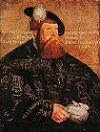



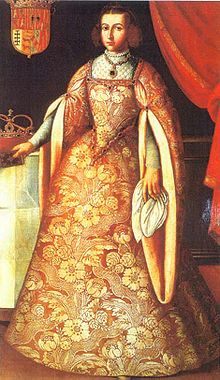
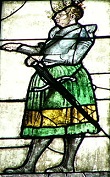
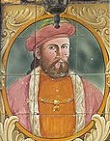
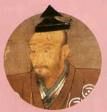

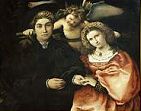
1523 On Jan. 1 the Hospitalers are allowed by the Ottomans to leave Rhodes. In Jan. Ulrich Zwingli (1484-1531) appears before the Great Council of Zurich to defend himself against charges of heresy, and he soapboxes bigtime and slams Church dogmas, image, relic, and saint worship, clerical celibacy, and the Mass; the Great Council is impressed, and withdraws the canton of Zurich from the jurisdiction of the bishop of Constance, and confirms its previous ban against preaching not founded on the Bible, which amounts to an official adoption of the Protestant Reformation; Zwingli goes on to turn Zurich into a theocracy ruled by him and a Christian magistrate, converting monasteries into hospitals, and eliminating Catholic Mass and confession, teaching that true Christians don't need some turkey and some mistletoe, er, the pope and the Roman Catholic Church? In the spring Franz von Sickingen (b. 1481) plunders Kaiserslauten, causing the rulers of Trier, Hesse, and the Palatinate, with help from the Swabian League to march on Landstuhl, sieging him in his castle, which he had thought impregnable until artillery are used (one of the first times in Euro history); on May 6 he is mortally wounded, and croaks on May 7, after which his castle is razed, ending the Knights' War (begun 1522), along with the power of German knighthood, after which most of the rebellion's supporters have their castles confiscated, causing the bankrupt knights to overtax their peasants, and all to quit paying church tithes, fomenting the Peasants' Revolt next year; meanwhile Ulrich von Hutten goes to Zurich to meet with Zwingli, then to Basel to try to talk Erasmus of Rotterdam to side with the Reformation, but he refuses to see him, and he dies of his 15-y.-o. syphilis on Ufenau Isle on Lake Zurich on Aug. 29. On June 6 after the Danes surrender, Gustav (Gustavus) I Eriksson Vasa (Wasa) (1496-1560) is elected king of Sweden (until Sept. 29, 1560), establishing the Vasa Dynasty (ends 1672), which takes Sweden and Finland (a province of Sweden) Lutheran; Christian II of Denmark is deposed and exiled by his nobles, and his uncle the duke of Schleswig-Holstein becomes Frederick I (1471-1533) of Denmark and Norway (until Apr 10, 1533); he never visits Denmark or learns to speak Danish, and is never actually crowned king of Norway although elected? The pope who excommunicates Henry VIII very clemently is VII instead of VIII? On Sept. 14 Pope (since 1522) Adrian VI (b. 1459) dies, and on Nov. 19 Giulio de' Medici, nephew of Lorenzo II de' Medici is elected Pope (#219) Clement VII (1478-1534), known for wearing a beard - now that the Roman Church is under attack, the Man better be a good ole billy-bob-boy from back home? Russia annexes Novgorod-Seversk (Novhorod-Siverskyi). Thomas More becomes speaker of the English House of Commons; low-born Thomas Cromwell (1485-1540), former soldier in the French army who returned to England around 1510 to become a moneylender and ended up as the confidential business mgr. of Cardinal Wolsey gets the latter's help to become an MP, beginning his rise. Duke Charles of Bourbon, tired of Francis I's attempt to claim Bourbon from him, and incurring the enmity of Francis' mother Louise of Savoy, flees the country, and next year renounces France and joins up with HRE Charles V, making a private alliance with him and Henry VIII of England to conquer and partition France; either before or after that, he is deprived of his estates and perquisites as constable of France; the province of Bourbonnais is annexed to the crown (until 1661). Wurtenburg goes Lutheran, as does Strasbourg, France, known for its pate de foie gras; Martin Luther returns to Wittenberg and introduces public worship with liturgy and communion in German in Electoral Saxony and Hesse; meanwhile the diversion of the HRE by his war with France allows the Protestant movement to spread fast. Mori Motonari (1497-1571) becomes head of the Mori clan in Japan. Jewish mystery man (a swarthy dwarf in Oriental costume with Messianic claims) David Reubeni (Reuveni) (1490-1541) visits Jerusalem, claiming to be the Messiah, a prince of a remote Jewish kingdom that is the home of the 10 lost tribes of Israel, claiming he came to remove a stone from a pagan temple placed into the Western Wall of the Temple Mount by rebel Jeroboam during the reign of King Solomon, not realizing that the wall was built by Herod the Great, causing Jews to jeer him until he leaves, after which he turns up in Italy claiming to be King David; in Nov. 1525 after presenting a letter of recommendation from Pope Clement VI, he meets with King John III the Pious of Portugal in Almeirim, claiming that he is the son of dead King Suleiman of Habor, which has 300K Israelite subjects, seeking an alliance between Christians and Jews against the Muslims, which he finds hard to stomach since he is busy persecuting suspected Marranos (fake Jewish converts to Roman Catholicism), but agrees to grant him eight ships with 4K cannon; too bad, 5 mo. later after some conversos stage a revolt near Badajoz, the king asks him to leave his kingdom, and he heads for the papal court in Avignon, followed by Bologna then Ratisbon (Regensburg), where he is put in chains and taken to HRE Charles V in Mantua, who hands him over to the Inquisition for extra crispy. HRE Charles V makes Ferdinand II of Aragon's widow Germaine de Foix and her new hubby (since 1519) margrave Johann of Brandenburg-Ansbach (1493-1525) joint viceroys of Valencia, who bring Castilian Spanish with them, downgrading the local Catalan dialect; she goes on to end the Revolt of the Brotherhoods (begun 1519), signing 100 death warrants, with 700 more executions performed; in Dec. 1524 she signs a gen. pardon but imposes big fines; on July 5, 1525 Johann dies, and Germaine marries Neapolitan prince Ferdinand, Duke of Calabria (1488-1550). Portuguese settlers are expelled from China. Pedro de Alvarado conquers the Mayan Quiche (Quiché) tribe, based in the fortified city of Utatlan, along with the Cakchiquel (Kaqchikel) tribe in Guatemala. The Indians in the Panuco River region in N Mexico revolt, and are suppressed by Cortes' lt.; Cortes' men begin the subjugation of Chiapas (ends 1528). Gil Gonzalez Davila obtains a license to continue his exploration, and returns to Central Am. by way of Honduras. Portuguese sailor Simao de Abreu discovers Celebes (Sulawesi) in the Greater Sunda Islands in Indonesia E of Borneo, followed in 1525 by Gomes de Sequira; a base is established in Makassar, which is taken by the Dutch in 1665 after arriving in 1605. Ignatius Loyola vists the holy sites of Jerusalem, but finds them too dangerous to stay long, so he returns to Barcelona to pursue a univ. education. Sugar is first grown in Cuba. By this year four out of every five books pub. in Germany are pro-Reformation. Inventions: The first marine insurance policies are issued in Florence. Nonfiction: Jean Froissart (1337-1410), Chronicles, Part One; trans. by John Bourchier, Lord Berners; covers the years 1322-1400 (first half of the Hundred Years' War). Anthony Fitzherbert, Book of Husbandry; first English manual of agriculture. Hans Judenkunig of Vienna (1450-1526), Manual of Lute Playing (first ever). Art: Albrecht Durer (1471-1528), An Unknown Man; Hans Imhof. Lorenzo Lotto (1480-1556), Master Marsilio and His Wife; Miracles of St. Clare of Assisi. Il Perugino (1446-1523), The Adoration of the Shepherds. Veit Stoss (1445-1533), Altar of Maria (Bamberg Cathedral). Titian (1477-1576), St. Christopher Carrying the Infant Christ (Doge's Palace, Venice); Entombment of Christ. Poetry: Hans Sachs (1494-1576), Die Wittenbergische Nachtigall; pro-Luther verse allegory. John Skelton (1460-1529), A Goodly Garland, or Chapelet of Laurell. Births: French king (1589-90) cardinal (1548-) Charles X of Bourbon (d. 1590) on Sept. 22 in La-Ferte-sous-Jouarre, Seine-et-Marne; 8th child of Charles IV de Bourbon and Francoise d'Alencon. Italian anatomist Gabriello Fallopio (Fallopius) (d. 1562) in Modena; pupil of Vesalius; discoverer of the Fallopian tubes and the semicircular canals of the ear, and namer of choice body parts incl. the vagina, placenta, and clitoris; leaves the study for the priesthood at Modena to study medicine. English statesman Sir Walter Mildmay (d. 1589) in Moulsham, Essex; son of Thomas Mildmay of Chelmsford (1515-66); educated at Christ's College, Cambridge U.; chancellor of the exchequer (1566-89). Deaths: Italian painter Luca Signorelli (b. 1441). German artist Thomas Burgkmair (b. 1444). Italian painter Il Perugino (Pietro Vannucci) (b. 1446). Italian wood engraver Ugo da Carpi (b. 1455). French artist Gerard David (b. 1460). German sculptor Adolf Daucher (b. 1460). Italian scholar Alessandro Alessandri (b. 1461). Chinese artist Tang Yin (b. 1470). German knight Franz von Sickingen (b. 1481) on May 7 in Landstuhl (KIA). German humanist Ulrich von Hutten (b. 1488) on Aug. 29 in Ulfenau Island, Lake Zurich (syphilis).


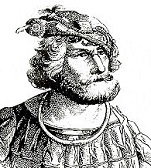



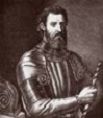


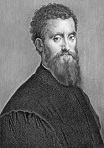

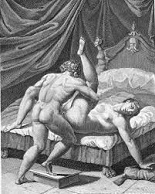

1524 On Jan. 1 20K abandon their homes in London after Bible Millennium Fever prophets use a 1499 pub. of a Tubingen, Germany mathematician about a planetary alignment to predict a flood which never happens; another prophet predicts Feb. 20 based on another planetary alignment in the constellation Pisces, but it's a no-show also. The Great German Peasants' Revolt (War) (ends May 15, 1525) against their lords in Thuringia (Swabia and Franconia in S Germany), led by Thomas Muntzer (Müntzer) (Munzer) (1489-1525), Florian Geyer of Giebelstadt (1490-1525), and Michael Gaismair (1490-1532) begins, fueled by the writings of Martin Luther (1483-1546), who thinks that if he can take on the pope and Church he can also challenge the socioeconomic inequalities of German feudalism, and pub. the Twelve Articles; too bad, he soon turns against them, and pub. the virulent pamphlet Against the Murdering and Thieving Hordes of Peasants, calling for their extermination, and looses on them landgrave Philip I the Magnanimous of Hesse (1504-67), who met Luther at the 1521 Diet of Worms then went Lutheran this year after a personal meeting with Philipp Melanchthon (no wonder that the Communists later decide to junk all of Christianity?); meanwhile (well-named?) German bookbinder Hans Nut (-1527) predicts the Second Coming of Christ exactly 3.5 years after the start of the Peasant's Revolt, which will be the start of 1K years of free food, love, and sex, then claims that he is the Messiah and gathers a following; too bad, he is killed during a prison escape in 1527. On Mar. 10 Henry VIII has a jousting accident which causes him to start leading a sedentary life without giving up his hearty eating habits - it's that lower belly fat that's a killer? On Mar. 1 Italian Florentine explorer (sailing under the French flag) Giovanni da Verrazano (Verrazzano) (1485-1527), sent by Francis I of France to explore the North Am. coast between Fla. and Newfoundland in hopes of finding a passage to the Pacific Ocean lands near Cape Fear, N.C.; on Apr. 17 after sailing S along the S.C. coast, turning N, discovering the Outer Banks of N.C. (thinking that it splits North Am. in two with the "Sea of Verrazano"), then missing Chesapeake Bay and the Delaware River, he discovers the mouth of the Hudson River and New York Bay, and anchors in the Narrows of New York Harbor between Staten Island and Long Island (home of the Manhasset, Shinnecock, Patchogue, and Montauk Indians), where a party of Lenape arrive in a canoe "clad with fowl feathers of diverse feathers. They came towards us very cheerfully, making great shouts of admiration, showing us where we might come to land most safely with our boat"; thinking that the Hudson River is a freshwater lake, he follows the S coast of Long Island past Block Island Sound, then records an island about the size of Rhodes (Rhode Island in Narragansett Bay near modern-day Newport?), where he meets "two kings more beautiful in form and stature than can possibly be described" (Massasoit's great-grandfather?); he then heads to the coast of Maine, then Nova Scotia and Newfoundland, then back to France - the first wop-dago in New York Harbor, and in a stolen vehicle? On Apr. 9 Vasco da Gama begins his Third Voyage to India, and dies in Cochin, India on Dec. 24. On May 13-14 Gov. Hernan Cortes of New Spain receives the Twelve Apostles of Mexico, Franciscan missionaries who begin mass Christianization of their captive audience - bam, and the dirt is gone? On May 23 Shah Ismail I (b. 1487) dies in Tabriz, and his 10-y.-o. son Tahmasp I (1514-76) becomes Safavid shah of Persia (until 1576), letting the pesky Qizilbash Turkoman tribeman run riot until he can attain the age of majority and put them in their place. On Sept. 1 the Treaty of Malmo (Malmö) is signed by Denmark, confirming the independence of Sweden under Gustavus I. In Aug. after the French under Protestant soldier Gideon Bonnivert invade Italy, and turncoat Frenchman Duke Charles of Bourbon helps HRE Charles V drive them out of Italy, leading the imperial army into Provence, they unsuccessfully siege Marseille; meanwhile Chevalier de Bayard (b. 1473) is mortally wounded, and dies on Apr. 30 in Romagnano Sesia, Italy. The Protestant princes of Germany get together at Ulm and take on HRE Charles V, causing his younger brother Ferdinand of Austria (to whom he entrusted the govt. of Germany in 1522) to form an alliance with the two dukes of Bavaria (William IV and Louis X) and the bishops of S Germany to stop the Satanic Protestant Reformation, which the Bavarian dukes have been suppressing since 1522; older duke William IV becomes a main leader of the Counter-Reformation, but since his younger brother Louis X claims the throne of Bohemia, he opposes the Hapsburgs (until 1534). The Second Diet of Nuremberg convenes to contine the work of the First Diet of 1522; the League of Catholic Princes is formed in Ratisbon. Sir Thomas Howard, 2nd duke of Norfolk dies, and his son Sir Thomas Howard becomes the 3rd duke of Norfolk, going on to become the #1 peer in England, picking the winning side in the Henry VIII divorce fight; his 7-y.-o. son Henry Howard (1516-47) (1st cousin of Anne Boleyn and Catherine Howard) becomes earl of Surrey, going on to receive a classical ed. in the English and French courts and becoming a poet and sonnet lover. Pedro de Alvarado founds the city of Guatemala City (modern-day pop. 2.9M) at the base of the Volcan del Agua ("Volcano of Water") (a volcano with a water-filled crater) in Valle de la Ermita (Hermitage Valley) as the capital of the Spanish capt.-generalcy of Guatemala, which incl. most of Central Am.; it becomes the capital of Guatemala in 1776. Panama gov. Pedro Arias de Avila sends Francisco Hernandez de Cordoba (Córdoba) (1475-1526) to conquer Nicaragua, with help from Hernan Cortes and Hernan Ponce de Leon, and he founds Granada in Nicaragua (first Euro city in Central Am.), followed by Leon. Cortes sends Cristobal de Olid to conquer and settle Honduras, but he goes rebel and is killed by one of Cortes' lts.; Cortes then personally leads an expedition and founds Trujillo,_Honduras on Trujillo Bay in NE Honduras before returning to Mexico City. Would-be conquistador stud of all time, middle-aged, illiterate but cagey Francisco Pizarro (1471-1541) under Avila's authority leads the first of two expeditions, along with Panama resident (since 1514) Diego de Almagro the Elder (1475-1538) to explore the Pacific coast S of Panama, which is rumored to contain gold (ends 1525). At the direction of HRE Charles V, Spanish scholar-diplomat count palatine Peter Martyr d'Anghiera (1457-1526) is made abbot of Jamaica by Pope Clement VII, and orders the construction of the first stone church there, although he never visits it. South Am. turkey is served for the first time at the English court - too much dark meat? Architecture: Square 28m-long 3-story Chateau d'If on If Island 1 mi. offshore in the Bay of Marseille is begun by Francis I (finished 1531) after a 1516 visit, pissing-off Marseille, whose 1481 annexation deal gave them the right to provide for their own defense. Nonfiction: Petrus Apianus (1495-1552), Cosmographicus Liber; work on astronomy and navigation that becomes popular throughout Europe until the end of the cent., and makes him a favorite of HRE Charles V, who showers him with titles and gold. Pope Clement VII (1478-1534), Poison Trials on Condemned Criminals; poison trials conducted on three condemned criminals, touting the antidote oil of Gregorio Caravita. Piston-pumping porno is born in Romo? I Sedici Modi (The 16 Sexual Positions) is pub. by Raphael's chief pupil Giuliano Romano (1492-1546), with engravings by Marcantonio Raimondi (1475-1534); Pietro Aretino (1492-1556) writes 16 Sonnets to accompany them; becomes one of the most notorious works of erotic art after it pisses-off Pope Clement VII, who has Raimondi clapped in the Vatican prison, causing Romano to flee, after which the Medicis intervene, and Aretino and Raimondi are expelled from Rome; the drawings of copulating couples in acrobatic "Aretinian postures" were originally drawn on the walls of the Vatican by Romano to get even with the pope for being late in paying him for other work, and Raimondi makes copper plates of them, prints them and circulates them among the upper class in Rome; the sonnets aren't written until Aretino is expelled from Rome, creating modern porno with its depiction of women as greedy for sex, and using bald words like cazzo (prick), potta (cunt), culo (ass), and fottere (fuck) to shock and excite, while trying to justify it as okay by blaming the clergy for centuries of sexual repression of the people, and portraying them as totally corrupt anyway (IOW let's all do it like the clergy); late in the year Romano accepts an invitation from Duke Federigo Gonzaga of Mantua to help drain the marshes, build flood fortifications along the Po and Mincio Rivers, and restore and adorn the Palazzo del Te, ducal palace and other bldgs.; Raimondi is allowed to return after several months of sniveling. London printer Jan Wynkyn de Worde pub. a trans. of Saxo Grammaticus' Gesta Romanorum (Historia Danica) (containing the source of the story of Amleth or Hamlet), as well as Robert Wakefield's Oratio, in which italic type is used for the first time in England. Music: Johann Walther (1496-1570) and Martin Luther (1483-1546), Geystlick Gesangk-Buchleyn (hymnal). Art: Lucas Cranach the Elder (1472-1553), Judgment of Paris. Albrecht Durer (1471-1528), Willibald Pirckheimer; Hieronymus Holzschuher - he's giving you that look you pretend isn't bothering you? Lorenzo Lotto (1480-1556), The Legend of St. Barbara (Trescore). Il Parmigianino (1503-40), Self-Portrait. Births: Ottoman sultan #11 (1566-74) (blonde) Selim II (the Yellow) (the Sot) (d. 1574) on May 28; son of Suleiman I the Magnificent (1520-66) and Roxelana (Hurrem). German-Swiss theologian and physician Thomas Erastus (Liber) (Lieber) (Liebler) (Lieber) (d. 1583) on Sept. 7 in Baden, Aargau; Erastus is Latin for beloved or lovely; argues that the sins of Christians should be punished by the state not the church, causing enthusiasts to go too far and conclude that the state should be supreme in all church matters? French humanist Pleiade poet (deaf) (cat hater?) ("Prince of Poets") Pierre de Ronsard (d. 1585) on Sept. 11 in Couture-sur-Loir, Loir-et-Cher; court poet of Charles IX. Spanish diplomat-administrator (Jewish) Don Joseph Nasi (Nassi) (Joao Miquez) (d. 1579); nephew of Dona Gracia Mendes Nasi (1510-69); escapes to Portugal, then Antwerp, France, Venice, and Constantinople in 1554, one step ahead of the Inquisition, and gets in good with the sultans; educated at the U. of Louvain. English Bible scholar (Protestant) William Whittingham (d. 1579); educated at Brasenose College, Oxford U. Portuguese #1 epic-lyric poet Luis Vaz de Camoes (Camões) (Camoens) (Camoëns) (d. 1580) (b. 1525?) in Lisbon; has an unhappy love affair at the royal court, loses an eye in N Africa (1547-9), and holds a civil service job in India (1553-69). English horticulturist Thomas Tusser (d. 1580). English "The Arte of Rhetorique", "Logique" rhetorician-diplomat-judge secy. of state (of Elizabeth I) (1577-81) Sir Thomas Wilson (d. 1581). Italian painter-architect Antonio Campi (d. 1587) in Cremona; imitator of the style of Correggio. Spanish gov. of Puerto Rico (1579) Juan Ponce de Leon II (d. 1591) in San Juan, Puerto Rico; son of Juan Ponce de Leon (1460-1521). French marshal (1577-) Armand de Gontaut, Baron de Biron (d. 1592); father of Charles de Gontaut (1562-1602). Swiss Roman Catholic Counter-Reformation leader Ludwig Pfyffer (d. 1594) in Lucerne. English MP Peter Wentworth (d. 1596); son of Sir Nicholas Wentworth (-1557); brother of Paul Wentworth (1533-93); father of Thomas Wentworth (1568-1628). English "A Survey of London" historian-antiquarian John Stow (Stowe) (d. 1605) in St. Michael, Cornhill, London. Flemish Renaissance sculptor Giovanni da Bologna (Jean Bologne) (Jean Boullongne) (d. 1608) in Douai; pupil of Michelangelo. French celeb Martin Guerre (Daguerre) (d. ?) in Hendaye; grows up in Artigat; husband (1538) of Bertrande de Rois. Deaths: English soldier Thomas Howard, 2nd duke of Norfolk (b. 1443). Croatian humanist poet Marko Marulic (b. 1450) on Jan. 5 in Split. Portuguese navigator Vasco da Gama (b. 1460) on Dec. 24 in Cochin, India (malaria); his male line goes extinct in 1747. English physician Thomas Linacre (b. 1460). German painter Hans Holbein the Elder (b. 1465). Spanish conquistdor Diego Velazquez de Cuellar (b. 1465) on June 12 in Santiago de Cuba. Papal mistress Giulia Farnese (b. 1474). French military hero (the last medieval knight) Pierre Terrail, Signeur de Bayard (b. 1473) on Apr. 30 in Romagnano Sesia, Italy. Italian painter Gian Giacomo Caprotti (b. 1480) on Jan. 19 in Milan; inherited Leonardo da Vinci's "Mona Lisa" and "The Infant St. John the Baptist". Persian Safavid shah #1 (1502-24) Ismail I (b. 1487) on May 23 in Tabriz. French queen Claude (b. 1499) on Oct. 20; her death frees Francis I to go hog wild and end up dying of syphilis in 1547?; the walnut-sized Claude (greengage) plum is named after her. Spanish Renaissance sculptor Vasco de la Zarza (b. ?).

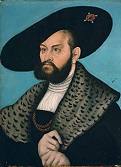
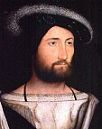




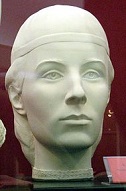

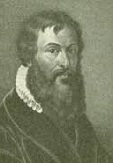




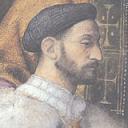

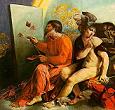
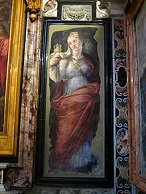

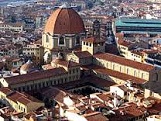
1525 On Jan. 2 after the radical Anabaptists challenge Zwingli's rule in Zurich, they are defeated in a disputation before the Great Council, and its leaders banished, gathering a peasant army which overruns Lorraine, until Claude of Lorraine, 1st Duke of Guise (1496-1550) destroys them in Lupstein (near Saverne), for which he is created the 1st duke of Guise in 1528 by Francis I when he returns from captivity, becoming the first non-prince of the royal house to hold the title, after which the Guises, who are descendants of the House of Anjou claim precedence over the Bourbon princes of Conde and Conti. On Jan. 21 after forcing his childless wife Solomoniya Saburova to become a nun, Russian tsar Vasili III marries bodaceous babe Elena Vasilyevna Glinskaya (1510-38), who bears sons Ivan IV the Terrble (1530-84) and Prince Yuri (1532-63) - time to trade-in a forty for two twenties? On Apr. 8 after two years of secret negotiations, the Treaty of Cracow (Krakow) between Albrecht I Hohenzollern of Brandenburg (1490-1568) of Prussia and Sigismund I the Old (Zygmunt I Stary) of Poland makes Prussia a hereditary duchy and Polish fiefdom for Albrecht and his brothers (AKA the Prussian Tribute); on July 6 Duke Albrecht (grandmaster of the Teutonic Order since 1511) announces his conversion to you-should-have-heard-what-I-seen Lutheranism, disavows the supremacy of the pope, declares Lutheranism the state religion of Prussia, making it the first Euro Lutheran state, dissolves the Teutonic Order and converts its land into a secular duchy (fief of the Hohenzollerns under the Polish crown) in East Prussia with himself as duke #1, and of course confiscates Church property to help with his finances and pay off any uppity nobles; he marries Dorothea (-1547), daughter of Frederick I of Denmark, and makes Konigsberg the capital of East Prussia, turning it into a Lutheran cultural center; later the district passes by inheritance to the elder branch of the House of Hohenzollern, which has ruled Brandenburg since 1415; the Teutonic Knights don't all go with the program, and on Dec. 16, 1526 Walter von Cronberg (1477-1545) is elected as grandmaster #38 (until 1543), receiving Prussia as his fief at the imperial diet in Augsburg after Albrecht refuses a summons; too bad, with all the wars going on (with the Protestants, peasants and Turks) the imperial ban never gets enforced, and Albrecht slides by; in modern times the HQ of the Teutonic Knights is listed as Singerstrasse in Vienna. The greatest French defeat since Agincourt, and it comes down to power tools? On Feb. 24 (a.m.) after imperial troops under Francesco Maria I della Rovere invade S France, and Francis I crosses Mt. Cenis pass and recaptures Milan, 23.5K French and Swiss troops (incl. 6.5K cavalry) are decisively defeated by the 23K-man German-Spanish army (incl. 4K cavalry) of HRE Charles V, led by Constable Charles III, Duke of Bourbon (1490-1527) and Naples-born Fernando Francesco de Avalos (Davalos), Marquis of Pescara (1489-1525) at the 4-hour Battle of Pavia outside the city walls at the Mirabello hunting preserve, with 15K French vs. 500 imperial casualties, becoming the first modern battle, with handheld firearms (muskets) (arquebuses) (harquebuses) (harquebi?) defeating traditional men-at-arms; after this the arquebus becomes the standard infantryman's weapon; 1.5K Spanish arquebusiers close in on the king, and a group of French nobles interpose to protect him, during which Louis II de La Tremoille (b. 1460) is shot through the heart and killed (the first Secret Service man to take a bullet for his president?); Francis I is captured in Pavia and held POW in Madrid, while Hapsburg Power Tools Charley the Fifth becomes master of Italy, magnanimously abdicating in Nov. in favor of his son dauphin Francis (b. 1518), which is magnanimously rejected; Charles of Bourbon is rewarded with the duchy of Milan; Bramante's use of candelabrum shafts as exterior decorations to pilasters in Milan is seen by the French and Spanish, and widely imitated in their home countries after they get back; cagey Marguerite d'Angouleme works overtime to get her brother Francis I back, riding horseback 12 hours a day in the winter to meet a safe-conduct deadline while writing letters at night and making use of the fact that Charles V once wanted to join her posse and marry her. On May 15 the Battle of Frankenhausen sees a combined army of Duke George of Saxony, Philip I of Hesse, and Elector Frederick III of Saxony defeat the peasant army of Thomas Munzer (b. 1489), losing six KIA and two wounded while killing 3K-10K badly-equipped untrained fleeing peasants; on May 27 Munzer is beheaded, along with 60K of his peasants, ending the Peasants' Revolt (begun 1524); meanwhile the dukes of Bavaria ally with the archbishop of Salzburg to suppress a farmer uprising in S Germany; meanwhile the Mennonite Church is founded in Zurich by ex-Anabaptist (former Catholic priest) Menno Simons (1496-1561), who wisely drops their Antinomian licentiousness in favor of proper biblical prudery to keep his head? Speaking of head? On June 27 Martin Luther marries former nun Katherina von Bora (1499-1552), who bears him six children, becoming known as "die Lutherin" - finally a nun gets some? In July the Scottish parliament approves a plan for four groups of magnates to share custody of 13-y.-o. James V in 3-mo. rotations, starting with Archibald Douglas, 6th earl of Angus, but when his time is up he reneges, not wanting his rival James Hamilton, 1st earl of Arran to get his hands on the kid, which later backfires as James turns on Angus and hates his guts for life; meanwhile English diplomat-churchman Thomas Magnus (1463-1550) is sent by Cardinal Wolsey of England to talk Margaret Tudor into living with her hubby Archibald Douglas, 6th Earl of Angus again, and she responds by divorcing him and marrying her 3rd (last) hubby Henry Stewart, 1st Lord Methven (1495-1552), master of the Scottish artillery (only Jewish member of the Scottish aristocracy) on Mar. 3, 1528, embarrassing her brother Henry VIII. The Hapsburgs obtain Cremona, Italy (until 1859). The Lutheran Reformation reaches Tartu, Estonia; the furnishings of the diocesan cathedral on Toome Hill are destroyed, and the bishop flees the mobs. A peace is signed between England and France. Pedro de Alvarado conquers El Salvador E of Guatemala, and becomes gov. of the Guatamala-Salvador district. Muslim Turkish Mongol chief (5th-gen. descendant of Tamerlane) Babar (Babur) (Baber) ("Tiger") (Xahir-ud-Din Muhammad) (1483-1530), prince of Ferghana in Afghanistan marches through Afghanistan and Persia, headed for the Punjab. Inca chief #11 Huayna Capac dies, and his sons Huascar (1491-1533) and Atahualpa (Atahualpa) (Atabalipa) (Atawallpa) (1501-33) begin a war of succession (ends 1532); meanwhile Pizarro's expedition reaches the San Juan River before turning back, discovering the existence and wealth of the Incan Empire - we'll be baack? Italian Franciscan friar Matteo Bassi (da Bascio) (Matteo Sarafini) (1495-1552) founds the Capuchin Order (Order of Friars Minor Capuchin) in an effort to return to the "true" way of solitude and penance of St. Francis; on July 3, 1528 Pope Clement VII issues the bull "Religionis Zelus", approving ' the order under the nominal jurisdiction of the Conventuals. Rodrigo de Bastidas (1467-1527) founds Santa Marta on the NW coast of South Am. N of Darien, the first permanent settlement in Nueva (New) Granada in N South Am. which eventually extends S to the Amazon. Prolific Venice-born painter Lorenzo Lotto (1480-1557), who spent time in Treviso (1503-6), the Marches (1506-8), Rome (1508-10), and Bergamo (1513-25) moves to Venice to wrap up his career for the next 25 years (until 1549). Hops is introduced to England and Germany from Artois, causing the term "ale" to become restricted to hopped brews. English scholar William Tyndale (1495-1536), fulfilling his vow "If God preserves my life, I will cause a boy that driveth a plow to know more of the Scriptures than the pope" (given to a Roman Catholic bishop who told him that he respects the word of the Pope more than the Bible) finishes his trans. of the New Testament into English from the original Greek (instead of the Latin vers. used by John Wycliffe in 1381), then has it printed in "safe" Worms, Germany by Peter Schoeffer (Schöffer) (1425-1503) (apprentice of Johannes Gutenberg) before being smuggled into England; he then begins work on the Old Testament. Architecture: Cardinal Thomas Wolsey presents Hampton Court to Henry VIII, and endows Cardinal (Christ Church) Cathedral in Oxford, with John Taverner (1490-1545) as the first organist and master of choristers; in 1522 the priory is surrendered to Wolsey to be used as the site for a college; meanwhile the fact that the Church is England's largest landowner, owning over a one-third of the country (more than the king), and that the clerics live it up and dress in fine clothes causes popular indignation, all focused on him? Tuscan-born Florentine super artist-architect Michelangelo di Lodovico Buonarroti Simoni (1475-1564) begins the Laurentian Library (Biblioteca Medicea Laurenziana) in Florence, Italy under commission from Medici pope Clement VII to house the Medici family library, ending up containing 11K mss. and 4.5K books, introducing the Mannerist Style of Architecture, a reaction to his own harmonious ideals, getting into asymmetrical compositions; too bad, when he leaves Florence in 1534, only the walls of the reading room are complete, and it doesn't open until 1571 after others carry out his plans. Inventions: Fernando Francesco de Avalos, Marquis of Pescara (1489-1525) invents the Harquebus (Arquebus) (first portable shotgun) just in time for the Battle of Pavia on Feb. 24. German mathematician Christoff Rudolff (1499-1545) introduces the radical sign for square roots in mathematics in Coss, the first German textbook on algebra. Amaretto (It. "a little bitter"), made of apricot kernels and brandy is invented by a young widowed innkeeper, who presents it to Leonardo da Vinci's pupil Bernardino Luini (1475-1532), who is painting frescoes for the church at Saronno. Nonfiction: Pietro Bembo (1470-1547), Prose della Volgar Lingua; earliest example of popular Italian writing. Albrecht Durer (1471-1528), Manual on Geometry; first one pub. in Germany. Jean Froissart (1337-1410), Chronicles, Part Two (posth); tr. John Bourchier. Gonzalo Fernandez de Oviedo y Valdes (1478-1557), La General y Natural Historia de las Indias (Toledo); first description for Euros of tobacco, pineapple, and the hammock; mentions how tasty the meat of the peacocks in the West Indies is, i.e. turkeys. Polydore Vergil (1470-1557), Life of St. Gildas. Juan Luis Vives, De Subventione Pauperum; demands state help for the poor. Art: Polidoro da Caravaggio (1495-1543) and Maturino da Firenze (1490-1528), Mary Magdalene (San Silvestro al Quirinale, Rome); St. Catherine of Siena (San Silvestro al Quirinale, Rome); Landscape (San Silvestro al Quirinale, Rome). Dosso Dossi (1483-1542), Jupiter and Mercury. Albrecht Durer (1471-1528), Madonna and Child with St. Anne; Virgin and Chld. Lorenzo Lotto (1480-1556), An Architect. Bernardino Luini (1475-1532), St. Agnes and St. Catherine (Convento Maggiore, Milan) (1525-30). Lorenzo Lotto (1480-1556), Portrait of a Young Man; Man with a Golden Animal Paw. Il Sodoma (1478-1549), St. Sebastian; Rape of the Sabine Women; Three Fates. Palma Vecchio (1480-1528), Three Sisters. Titian (1477-1576), Vanitas. Plays: Niccolo Machiavelli (1469-1527), Clizia; the char. Nicomaco is himself. John Skelton (1460-1529), Colyn Cloute; satire of Cardinal Wolsey, which gets him driven into sanctuary for life. Births: Italian Renaissance polyphonic Roman School composer Giovanni Pierluigi da Palestrina (d. 1594) on Feb. 3 in Palestrina (SE of Rome). French author-poet Joachim du Bellay (d. 1560). Italian theologian (Socinianism founder) Laelius Socinus (Lelio Sozzini) (d. 1562) in Siena. Dutch stadtholder (1549-68) Jean de Ligne, Duke of Arenberg (d. 1568); son of Louis de Ligne, baron of Barbancon and Maria of Bergen (1503-66). Polish religious leader Peter Gonesius (Piotr of Goniadz) (Giezek) (d. 1573) in Goniadz; educated at the U. of Padua. Scottish secy. of state (1558-73) Sir William Maitland of Lethington (d. 1573); educated at St. Andrews U. Ottoman Valide sultan (1574-83) Nur-Banu ("Princess of Light") (Cecilia Vernier Baffo) (d. 1583) in Venice, Italy; niece of Venetian doge Sebastiano Venier. Irish Kildare Geraldine heir Gerald FitzGerald, 11th Earl of Kilare (d. 1585); son of the 9th earl of Kildare and Countess Elizabeth of Kildare; half-brother of Silken Thomas, 10th earl of Kildare. Deaths: Itlian sculptor Andrea della Robbia (b. 1435) on Aug. 4. Italian painter Fiorenzo di Lorenzo (b. 1445). German financier Jakob Fugger (b. 1459). French gen. Louis II de La Tremoille (b. 1460) on Feb. 24 (KIA in the Battle of Pavia). Italian physician-philosopher Pietro Pomponazzi (b. 1462) on May 18 in Bologna. German Saxon elector Frederick III the Wise (b. 1463) on May 5. French duke Charles IV, duc d'Alencon (b. 1489). Italian condottiero Fernando Francesco d'Avalos (b. 1489) on Nov. 4 in Milan. German Anabaptist founder Thomas Muntzer (b. 1489) on May 27 in Muhlhausen (executed). German Protestant rebel leader Florian Geyer (b. 1490) on June 10 near Wurzburg; stabbed in the Gramschatzer Wald by two servants of his traitor brother-in-law Wilhelm von Grumbach. German-born Spanish viceroy of Valencia (1523-5) Johann of Brandenburg (b. 1493) on July 5 in Valencia. Spanish Conquistador Javier Alonso Luis Fernandez de Lugo (b. ?); born in Sanlucar de Barrameda; of Galician descent; father of Pedro Fernandez de Lugo (1475-1536).







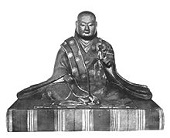


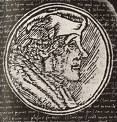


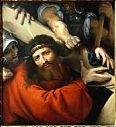
1526 On Jan. 14 the Four Years' (Italian) War (begun 1521) is ended by the Treaty of Madrid, renouncing all French claims to Italy, Burgundy, Flanders et al., promising to restore Bourbon to Charles of Bourbon, and proposing a crusade against Muslims and Lutherans; on Mar. 15 imprisoned Francis I is forced to exchange himself for his two sons Francis III, duke of Brittany (b. 1518) and Henri II (b. 1519), who end up spending three years in captivity, changing them into TB-infected ghouls who like to dress in black; after signing the treaty on Mar. 23, Francis I promptly reneges on his promise to Charles of Bourbon (causing the latter to turn against him), then joins the anti-Spanish Holy League of Cognac on May 22, which incl. the pope, Florence, Venice, and the Sforza, with the goal of restoring the 1522 status quo; Charles of Bourbon is given an army to invade N Italy with, but no funds or military supplies, pissing his troops off, causing them to get out of control and pillage and loot, forcing the Sforza out of Milan on July 24 and attacking Rome on Sept. 20; on Sept. 21 the Vatican is looted by a mob organized by Cardinal Pompeo Colonna (1479-1532) and supported by members of the hungry army of the Constable de Bourbon; meanwhile HRE Charles V sieges Arles in Burgundy (SE France), site of an archiepiscopal see. Babar conquers North India and turns it into a Tower of Babel? On Apr. 20-21 the First Battle of Panipat sees the Delhi Sultanate under Ibraham Lodi defeated by Turkic Muslim Babar (Babur) (Baber) ("Tiger") (Xahir-ud-Din Muhammad) (1483-1530), who occupies Delhi and Aghra and becomes emperor #1 of the Mughal (Mogul) Empire in N India (until Dec. 26, 1530), which peaks at 4M sq. km, making it the 2nd largest after the Maurya Empire (5M sq. km), founding a line that "builds like giants and finishes like jewelers", adopting Hindustani (derived from an obscure dialect of Western Hindi, which, along with Eastern Hindi is derived from Prakrit) as its official language; religious toleration is allowed, and the Muslims introduce Arabic and Persian words and form the subdialect of Urdu, written in a Persian script, pissing-off "patriotic" Hindus, causing them to create the artificial subdialect of Hindi (different than the Western Hindi language, parent of Hindustani), purging the Muslim words and substituting Sanskrit, and writing it with the Devanagari script, causing a Hindustani subdialect war in India. Henry VIII of England begins to petition Pope Clement VII for an annulment of his marriage to sterile wife (since June 1509) Catherine (Katherine) of Aragon (1485-1536) whose nephew HRE Charles V controls the pope, petitions back; Henry VII offers Reginald Pole (1500-58), dean of Exter (a Plantagenet) the archbishopric of York if he will support the divorce, but he refuses and flees to the Continent, then pub. the treatise "Pro Ecclesiasticae Unitatis Defensione", dissing the idea, causing the king to begin persecuting his family, executing his mother Margaret Pole, 8th Countess of Salisbury (1473-1541) (last surviving member of the House of Plantagenet) on May 27, 1541 in a bloody botched beheading (beatified in 1886 by Pope Leo XII); Sir Thomas More (1478-1535) turns against the king on religious principles; Henry revamps the royal library to use it to prove his right to do what he intends to do anyway. On May 19 emperor (since 1500) Go-Kashiwabara (b. 1464) dies, and on June 9 his 2nd son Go-Nara (1495-1557) (personal name Tomohito) becomes Japanese Yamato emperor #105 (until Sept. 27, 1557). In June the First Diet of Speyer, led by Charles V's regent Ferdinand meets to deal with the Lutherans, receiving a protest petition from the Protestants, but ends up leaving it to each prince in the empire what if anything to do by the time it recesses on Aug. 27 to deal with the Ottomans. On Aug. 29 the most tragic battle in Hungarian history takes place as all 25K members of the Hungarian army of Louis II suffer a crushing defeat at the First Battle of Mohacs (Mohács) ( Plain) (second in 1687) in S Hungary on the the right bank of the Danube River (115 mi. S of Budapest) by the Janissaries and artillery of Sultan Suleiman I the Magnificent, with the Hungarians losing 10K infantry and 4K cavalry plus two archbishops, 11 bishops, 16 bannerets, and 12 magnates, causing the Ottoman Empire to become #1 in C Europe; Louis II (b. 1506) is KIA trying to escape, causing Suleiman I to utter the soundbyte: "I came indeed in arms against him; but it was not my wish that he should be thus cut off before he scarcely tasted the sweets of life and royalty"; a week later the city of Pest (across the Danube River from Buda) (home to a large Jewish pop.) is captured, opening the way to the Danube Basin and leading to the partitioning of Hungary between the Ottoman Empire, the Hapsburg Monarchy of Austria, and the Principality of Transylvania; childless Louis (Ladislas) II Jagiello (b. 1506) of Hungary and Bohemia is KIA, and HRE Charles V's brother Ferdinand I of Austria (later HRE Ferdinand I) of the cadet line of Hapsburgs is elected his successor by virtue of his marriage to Louis' II's sister Anna; the Jagellon line in Bohemia dies out, and the Hapsburgs (Habsburgs) of Austria succeed to the throne in Bohemia, merging Bohemia (incl. Wroclaw/Breslau) into Austria, reintroducing the Roman Catholic religion, and making the thrones of Bohemia and Hungary hereditary possessions of the Hapsburg archduchy of Austria, which later becomes the Austrian-Hungarian Empire - HRE Frederick III would be proud? On Sept. 29 after landing in Winyah Bay near modern-day Georgetown, S.C. Spanish explorer Lucas Vazquez de Ayllon (Vázquez de Ayllón) (1475-1526) founds the colony of San Miguel de Guadalupe in the Carolinas, becoming the first white Euro colony in the modern-day U.S., and the first to use African slave labor; too bad, of 600 colonists, 450 die within 3 mo., and after Ayllon dies on Oct. 18 the rest head back to Hispaniola in the winter. One potato, two potato, thirteen? In late Nov. Francisco Pizarro lands his 2nd expedition in Ecuador in the Gulf of Guayaquil, sees his men grumble thinking he's nuts, then draws a line in the sand, promising unimaginable riches if they cross it, and the "Glorious 13" do so, even though no Euro knows for sure of the existence of any undiscovered civilization on the W side of the South Am. continent; in order to justify the filthy lucre they're going to steal for their personal enrichment, they have a coverstory that it's in the name of the Catholic Spanish crown, to convert the poor unenlightened savages to Christ under their loving stewardship, bringing along Catholic priest Hernando de Luque, dean of the Panama cathedral. An Anglo-Scottish peace is signed. The Hanseatic League and Thuringia go Lutheran. Poland-Lithuania wars with the Teutonic Knights, and the Poles invade S Livonia and capture Dorpoat, after which a peace is agreed to in return for a 90 ducat reparation payment; the Lutheran duchy of Courland officially backs its old Roman Catholic ally Poland but luckily doesn't need to send troops. HRE Charles V marries Isabella of Portugal. Released by Cortes, Panfilo de Narvaez returns to Spain and is appointed Spanish gov. of Florida ("Land of Flowers"), launching the Narvaez (Narváez) Expedition next year, with 300 men assigned to explore Florida (Fla.) (Sp. "land of flowers"); now all he has to do is conquer it from a bunch of hostile aborigines and nasty wild beasties - without the Crocodile Hunter? Francisco Hernandez de Cordoba rebels against Panama Gov. Pedro Arias de Avila and is captured and beheaded. Pedro de Alvarado becomes gov. of Honduras, while the Spanish settlers begin infighting; Alvarado founds San Pedro Sula in NW Honduras, and dispatches an expedition to found Gracias a Dios in NE Honduras. King (since 1492) Binnya Ran II (b. 1469) dies, and his 15-y.-o. eldest son Thushin Takayutpi (1511-39) becomes Hanthawaddy king #18 of Burma (until 1539), proving witless, frittering away his daddy's kingdom and allowing rival kingdoms to gobble it up. Sebastian Cabot is financed by a group of merchants in Sevilla to begin an expedition to reach the Moluccas, but he gets diverted into the Rio de la Plata while searching for a passage to the east. The Moravian Brothers (Anabaptists) settle in Moravia (until 1622). The Jews in Hungary are persecuted. Anabaptists in St. Gallen, Switzerland begin running through the streets shouting that the Last Day will arrive in exactly one week, causing the town to shut down as the pop. gets right with Gawd, only to see the Big Day come and go, after which humanist scholar Joachim Vadian (1484-1551) is elected mayor, leading the conversion of the city to Lutheranism, causing iconoclastic riots; meanwhile the Roman Catholic abbey holds out until 1803 - two balls and a strike, two on, two out, tie game, fifth inning? Swabian furrier Melchior Hoffman (1498-1544), who converted to Lutheranism in 1522 pub. On the Twelfth Chapter of Daniel, a pamphlet predicting the End of Days in Easter, 1533, when Elijah and Enoch will appear and overthrow the pope, then get martyred, beginning a 42-mo. tribulation period, after which Christ will return; of course, he thinks he's Elijah, and ends up in prison in Strasburg. The Portuguese visit New Guinea. Hans Holbein the Younger visits England for the first time. Ignatius Loyola is jailed for six weeks at Alcala for his suspect new brand of spirituality. English scholar Myles (Miles) Coverdale (1488-1569), who entered the Augustinian monastery of Cambridge in 1514 after Roman Catholic ordination as a priest leaves after being influenced by prior Robert Barnes (1495-1540) (who went Lutheran), and hooks up with William Tyndale (1494-1536), starting to trans. the Bible and Apocrypha into English. Francisco de Sa de Miranda (1485-1558) founds the Italianate School of Lit. in Portugal. After training in Hamburg, Hannover, Germany-born brewer Cord Broyan (-1570) invents light brown barley-wheat top-fermented Broyhan Beer, which becomes a hit, gaining wide distribution, causing Hannover in 1609 to limit the number of brewers to 317 and force the burghers to join a shareholders co. and guild, which becomes Gilde Brauerei; it ends up being owned by Anheuser-Busch InBev. Inventions: The card game Piquet is first played - don't piquet your nose? Nonfiction: A Swedish Trans. of the New Testament is pub., and Michael Agricola (1510-57) sets out to trans. it into Finnish, although virtually nothing had ever been pub. in that language and he has to wing it. Anon., Deliberations on the Reality and Heresy of Witchcraft; "What remedy will destroy the plague of those witches". Hector Boece, Historia Gentis Scotorum. Jean Francois Fernel (1497-1558), Monalosphaerium. Martin Luther (1483-1546), The German Mass and Order of Divine Service (Jan.); splits with the Roman Catholic Mass; The Sacrament of the Body and Blood of Christ—Against the Fanatics (Sept.); argues for the literal presence of Christ's body and blood in the Lord's Supper against the Sacramentarians incl. Ulrich Zwingli, Andreas Karlstadt, Johannes Oecolampadius, Caspar Schwenckfeld et al., but splits with the pope in his claim that the sacraments are good works that can be used to merit salvation, which is obtained through faith. Polydore Vergil (1470-1557), Liber de Prodigiis; a Latin dialogue between Polydore and his friend Robert Ridley of Cambridge. Art: Antonio da Correggio (1489-1534), The Assumption of the Virgin (1526-30) (Parma Cathedral). Albrecht Durer (1471-1528), The Four Apostles (his masterpiece?); Erasmus and Melanchthon (copper engraving). Lorenzo Lotto (1480-1556), Christ Carrying His Cross; Young Man with a Book. Births: Flemish physician-botanist-horticulturist Charles de l'Ecluse (l'Écluse) (L'Escluse) (Carolus Clusius) (d. 1609) on Feb. 19 in Arras; introducer of the potato to Germany, and the tulip bulb culture to the Netherlands. Engish lord chamberlain (1585-96) Henry Carey, 1st Baron Hunsdon (d. 1596) on Mar. 4; son of Anne Boleyn's sister Mary Boleyn (1499-1543) (Henry VIII's mistress); 1st cousin of Elizabeth I; father of George Carey, 2nd baron Hunsdon (1547-1603). German humanist writer-statesman and astrologer Heinrich Rantzau (Ranzow) (Ranzovius) (d. 1598) on Mar. 11; son of Johan Rantzau (1492-1565); great-uncle of Josias von Rantzau (1609-50); friend of Tycho Brahe. German Lutheran Albertine Wettin elector of Saxony (1553-86) Augustus I (d. 1586) on July 31 in Freiberg; 2nd son of Henry IV the Pious (1473-1541) and Katharina of Mecklenburg; younger brother of Maurice I (1521-53). German Count Palatine (1543-69) Wolfgang of Zweibrucken (d. 1569) on Sept. 26 in Zweibrucken; only son of Count Louis II (-1532) and Elizabeth of Hesse; husband (1545-) of Anna of Hesse, daughter of Landgrave Philip I of Hesse; father of Charles I, count Palatine of Zweibrucken-Birkenfield (1560-1600). Spanish adm. (Roman Catholic) Alvaro de Bazan (Álvaro de Bazán), 1st Marquis of Santa Cruz de Mudela (d. 1588) on Dec. 12 in Granada; never loses a battle; his personal galley is called La Loba (The Seawolf), named after its golden figurehead. Italian agronomist Giovan Vettorio Soderini (d. 1596) in Florence; educated at the U. of Bologna. Ottoman royal poet ("Sultan of Poets") Baki (Mahmud Abdulbaki) (d. 1600) in Constantinople; friend of Suleiman I. Deaths: Austrian lutenist-composer Hans Judenkunig (b. 1450). Italian-born Spanish historian Peter Martyr d'Anghiera (b. 1457) in Oct. in Granada. Italian painter Vittore Carpaccio (b. 1460). French poet Jean Marot (b. 1463) in Paris. Japanese Yamato emperor #104 (1500-26) Go-Kashiwabara (b. 1464) on May 19. Italian mathematician Scipione del Ferro (b. 1465) on Nov. 5. Burmese king (1492-1526) Binnya Ran II (b. 1469) in Pegu. German physician Eucharius Rosslin (b. 1470) in Frankfurt on Main. Spanish explorer Diego Colon (b. 1474) on Feb. 23/26 in La Puebla de Montalban, Spain. Spanish explorer Lucas Vazquez de Ayllon (b. 1475) on Oct. 18 in San Miguel de Gualdape. Spanish round-the-world explorer Juan Sebastian de Elcano (b. 1476) on Aug. 4 in the Pacific Ocean; dies of malnutrition on an expedition to claim the East Indies for Charles I.



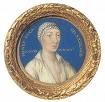




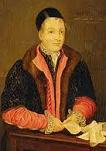

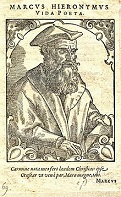
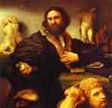

1527 Early in the year Ferdinand is crowned king of Bohemia in Prague, followed by king of Hungary, and reorganizes the the Hapsburg admin. in Austria; last Nov. 11 a strong Hungarian nationalist party of nobles supported by the Turks crowned John (Janos) Zapolya as king John I (1487-1540) (until July 22, 1540) and started a civil war, with John's son John Sigismund later getting into the act (ends 1562). On Mar. 16 Mughal emperor Babar wins the Battle of Kanwaha near Agra, extending his domain. In Apr. Francisco Pizarro, leading his four Mafia-like brothers and a small party of armed horsemen lands at Tumbez (Tumbes), confirming the existence of the Inca Empire; he then goes to Spain to tell of his discovery and get backing for a Mafia-style takeover of innocent peoples in the name of Christ, Mother Church, and Spain, not necessarily in that order? If we make it through December everything's gonna be all right I know? After HRE Charles V, Habsburg ruler of Germany, Spain, and the Netherlands doesn't provide for their pay, the German-Spanish army of Duke Charles III of Bourbon (1490-1527), to whom he promises booty ravages N Italy looking for loot, arriving at the gates of Rome on May 5; after Pope Clement VII (Giulio de' Medici) refuses to pay a big enough ransom they sack Rome, starting on the fog-smothered morning of May 6, killing 4K; entire hospitals and orphanages are emptied, and their raped bodies drowned in the bloody Tiber River; the pope retreats to Castel Sant'Angelo just E of the Vatican on the Tiber, where he holes-up for 8 mo.; on May 6 (early in the action) Charles III of Bourbon is KIA by an arrow (bullet?) shot by Benvenuto Cellini (1500-71); papal army CIC Duke Francesco Maria I della Rovere of Urbino, who sits idly by during the imperial invasion is blamed for the sack of Rome, lowering his capital yet further with Clement VII; this whole affair symbolizes the downfall of Renaissance Italy to imperial Spanish rule, and the end of the High Renaissance?; Charles V later apologizes, claiming that Bourbon and his army were out of control, and the pope forgives him; Francis I seizes the remainder of Bourbon's estates and labels him a traitor, painting the doorways of the Bourbon Palace in Paris yellow; the 9th cent. line of Bourbon in France ends, but never fear, another line breaks through to royalty via Antoine de Bourbon, duc de Vendome, who marries Jeanne d'Albret of Navarre and has son Henry of Navarre, who becomes Henry IV in 1589; meanwhile Italian engraver Marcantonio Raimondi is held for ransom by the Spanish troops of Charles V, and after paying the ransom ruins him financially, he drags back to his hometown of Bologna, staying for life. In May after Henry VIII puts him up to it, Cardinal Wolsey, papal legate to England sets up a secret tribunal in his London home of York Place, which calls Henry VIII to answer to the charge of having lived for 18 years unlawfully with the wife of his deceased brother Arthur, planning to hustle an annulment through and get the pope to agree before Catherine of Aragon finds out and tells her nephew HRE Charles V; too bad, on June 1 the news of the sacking of Rome and the taking of the pope prisoner by Charles' troops throws a wet tampon on the plot; speaking of wet tampon, Anne Boleyn is busy working to throw one on Henry FitzRoy, 1st Duke of Richmond and Somerset (1519-36), son of mistress Elizabeth "Bessie" Blount (1502-1540), whom Henry VIII is considering making his heir; Catherine describes Anne as "a woman who is the scandal of Christendom". On June 22 ater conquering the 4th cent. C.E. city of Sunda Kelapa from the Portuguese, Javanese Demak Sultanate gen. Fatahillah founds the city of Jakarta (originally Jayakarta) (modern-day pop. 9.6M/30.2M), which on Mar. 4, 1621 is taken over by the Dutch, who rename it Batavia; on Aug. 8, 1942 it is renamed Jakarta, becoming the 2nd largest urban agglomeration after Tokyo. In the summer Ignatius Loyola is questioned by the Inquisition (Dominicans) in Salamanca, and made to do 21 days in jail for his suspect new brand of spirituality. In Nov. Giovanni da Verrazano (b. 1485) is captured off the coast of Cadiz and hanged for piracy by order of HRE Charles V; either that or he is eaten by cannibals in the Carribean - cocky New Yorker? The Second Florentine Repub. (ends 1532) is founded after another revolt against the Medici. Kurpfalz (Electoral Palatinate) and Hesse go Lutheran, with landgrave Philip I the Magnanimous of Hesse (1504-67) closing down the monasteries in his principality and founding U. of Marburg on July 1, becoming the first Protestant univ. After the New Testament is pub. in Swedish in 1526, the Reformation begins in Sweden under king (1523-60) Gustav I Vasa (1496-1560), who obtains the right to confiscate Church property and suppress monasteries from the Council of Vasteras, and in 1536 founds the Lutheran Swedish Church, breaking with Rome completely and abolishing canon law, ending the Swedish Middle Ages; the Bible is trans. into Swedish in 1541, and Finnish in 1543. Marguerite d'Angouleme, whose first hubby Duke Charles of Alencon died in 1525 marries Henri d'Albret, the future Henry II, titular king of Navarre, making her Margaret of Navarre (1492-1549); she bears Jeannne d'Albret (1528-72), who becomes the mother of French king Henry IV in 1453. Former royal bodyguard Mac Dang Dung (-1541) deposes the last Le king, seizes the throne of Vietnam, and founds the Mac Dynasty (ends 1692), with the Le (based in Hanoi), Nguyen (based in Hue), and Trinh (based in Hanoi) families vying for power, the latter two pretending to be supporting the Le Dynasty, which nominally continues to rule until 1787. Flemish composer Adrian Willaert (1490-1562) becomes maestro di cappella at St. Mark's in Venice. Sebastian Cabot visits Paraguay (Guarani "pararaguay" = great river, meaning the Piranha River), long settled by the Tupian-speaking Guarani Indians, travels up the Parana and Paraguay Rivers, and builds the fortification of Santa Espiritu, which is sieged by pissed-off natives. Nuno (Nuño) Beltran de Guzman (Guzmán) (1490-1544) becomes the royal gov. of Panuco district. Juan Martinez de Ampies (Ampúes) (Ampues) is sent by the govt. of Santo Domingo to found the invasion base of Santa Ana de Coro (Sp. "wind") in Venezuela, which in 1529 HRE Charles V grants to the Welser Family of merchants of Augsburg, Germany, to which he is heavily in debt. Paracelsus lectures on medicine at the U. of Basel. Ferdinand de Gonzaque (Ferrante I de Gonzaga) (1507-57) succeeds Charles III de Montpensier and de Bourbon as grandmaster of the Priory of Sion (until 1557) (1575?) :). Nonfiction: Petrus Apianus (1495-1552), Ein Newe und Wolgegrundete Underweisung aller Kauffmanns Rechnung in Dreyen Buchern, mit Schonen Regeln und Fragstucken Begriffen; handbook of commercial arithmetic, incl. a variant of Pascal's Triangle. Hector Boece (1465-1536), Historia Gentis Scotorum (History of the Scottish People); Scottish history to 1438; written for the accession of James III; big hit; too bad, it's full of inaccuracies, and kisses kingly butt too much, esp. in the treatment of Macbeth; pub. in 1536 from Latin into Scots by John Bellenden, becoming the oldest book of Scots prose to survive to modern times. Lionardo Giachini (Leonardus Jacchinus), Treatise on the Medicinal Virtues of the Melon (Popone). Marco Girolamo Vida (1490-1560), De Arte Poetica. Art: Antonio da Correggio (1489-1534), Madonna of St. Jerome. Hans Holbein the Younger (1497-1543), Sir Thomas More and His Family. Lorenzo Lotto (1480-1556), The Annunciation; Portrait of Andrea Odoni. Parmigianino (1503-40), Vision of St. Jerome. Poetry: Marcus Hieronymus Vida (1485-1566), Scacchia Ludis; 658-line poem about a chess game between Apollo and Mercury, with rooks called towers, leading to the modern names castle and castling, and the name Caïssa (a Thracian dryad) for the goddess of chess. Novels: Niccolo Machiavelli (1469-1527), Novella; archdemon Belphegor (Baal Peor) is sent by Pluto to Florence, marries, then returns to Hell to get away from the nagging bitch? Births: Dutch geographer-cartographer Abraham Oretelius (d. 1598) on Apr. 14 in Antwerp. Spanish king (1556-98), HRE (1558-98), king of the Two Sicilies (1554-98), king consort of England (1554-8), king of Chile (1554-6), Portuguese king (as Philip I) (1580-98) ("the Terror of the Protestants") Philip II (the Prudent) (d. 1598) on May 21 in Valladolid; only legitimate son of HRE Charles V (1500-58) and Isabella of Portugal (1503-39) (daughter of Manuel I); the 1588 Spanish Armada king. English (Queen Elizabeth I's) astrologer and mathematician-astrologer John Dee (d. 1609) on July 13 in Tower Ward, London; student of Marsilio Ficino (1433-99). Austrian HRE (1564-76) (Roman Catholic) Maximilian II (d. 1576) on July 31 in Vienna; son of Ferdinand I and Anne of Bohemia-Hungary. English MP and lord warden of the Cinque Ports Sir William Brooke, 10th Baron Cobham (d. 1597) on Nov. 1; son of George Brooke, 9th Baron Cobham (-1558) and Anne Braye (-1558); educated at the King's School, Canterbury, and Queens' College, Cambridge U. Welsh cartographer and MP Humphrey Llwyd (Lhuyd) (d. 1568) in Foxhall, Denbigh, Denbighshire; educated at Brasenose College, Oxford U.; coiner of the term "British Empire". French La Pleiade Renaissance poet Remy (Rémy) (Rémi) Belleau (d. 1577) in Nogent-le-Rotrou; student of Marc Antoine Muret and George Buchanan. English statesman-soldier Sir William Drury (d. 1579) on Oct. 2 in Hawstead, Suffolk; grandson of House speaker Sir Robert Drury (-1536); educated at Gonville College, Cambridge U. Spanish mystic poet Luis de Leon (d. 1591). Italian Renaissance painter Giuseppe Arcimboldo (Arcimboldi) (d. 1593) in Milan; known for kinky portraits of heads made out of fruits, veggies, flowers, roots, fish and books. Italian Mannerist painter-sculptor-architect Pellegrino Tibaldi (Pellegrino di Tibaldo de Pellegrini) (d. 1596) in Puria di Valsolda, Milan; grows up in Bologna; father of Domenico Tibaldi (1541-83); student of Perin del Vaga. Austrian mistress (of HRE Charles V) Barbara Blomberg (d. 1597); mother of Don John of Austria (1547-78). Spanish Roman Catholic priest and Orientalist (ed. of "The Antwerp Polyglot") Benito Arias Montano (d. 1598) in Fregenal de la Sierra, Extremadura. Flemish geographer Abraham Ortelius (Oertel) (Ortell) (d. 1598) in Antwerp; pupil of Gerhardus Mercator. Deaths Italian writer Francesco Colonna (b. 1433); leaves the Latin epic poem "Dream of Delfilo" (Delfili Somnium) (pub. in 1959). Portuguese explorer Pero da Covilha (b. 1460) in Ethiopia. Spanish conquistador Rodrigo de Bastidas (b. 1467). Italian duck-plucker Niccolo Machiavelli (b. 1469) on June 21 in Florence; dies after receiving last rites; bured in the Church of Santa Croce in Florence, complete with a monument with the epitaph "Tanto Nomini Nullum Par Elogium" (No eulogy would be appropriate to such a great name): "God is not willing to do everything, and thus take away our free will and that share of glory which belongs to us"; "Men are more apt to be mistaken in their generalizations than in their particular observations." Italian navigator Giovanni da Verrazano (b. 1485) in Nov. in Cadiz (executed). Spanish conquistador Juan de Grijalva (b. 1490) on Jan. 21 in Honduras (killed by natives). French traitor gen. Charles III de Bourbon (b. 1490) on May 6 in Rome (KIA while sacking the City of God for the Priory of Sion?).







1528 Plague breaks out again in England. On Jan. 1 a planned attack on Erfurt by Anabaptist leader Hans Romer, who thinks Christ is coming this year is stopped in advance after he is betrayed. On Feb. 2 Ignatius Loyola arrives in Paris on foot, spending the next six years in loyal destitution. On Feb. 18 after returning from captivity in Madrid in 1526 and finding the Louvre uncomfortable, Francis I begins demolition of the great central tower of the Louvre to make it into a palatial residence; on Mar. 15 HE announces plans to make Paris his principal residence and begins the large hunting lodge Chateau de Madrid in Neuilly on the edge of the Bois de Boulogne. Welcome to Hurricane Country? In Apr. 1528 the Narvaez (Narváez) Expedition, led by 1-eyed Spanish explorer Panfilo de Narvaez (Pánfilo de Narváez) (1470-1528) sails from Cuba with 300 soldiers and colonists in an attempt to colonize Florida (Fla.) (Sp. "land of flowers"), and lands on Apr. 14 near Cape Corrientes after discovering Pensacola Bay in the Fla. Panhandle; after exploring a dismal swampland filled with people who don't want them they end up in Tallahassee, and on Sept. 22 they set sail in five crude barges and try to reach the Panuco River, but get shipwrecked in Nov. on the Texas coast, where he tells his men "every man to himself - Spain ends here"; too bad, the Apalachee Indians kick his butt, and he barely escapes to the Mississippi River before being killed in Nov.; on Nov. 6 after surviving a storm at the mouth of the Mississippi River, his treasurer Alvar Nunez (Álvar Núñez) Cabeza de Vaca (1490-1557) (Sp. "cow head") and three others, incl. African (Moroccan) slave Esteban Dorantes (Estevanico) (1500-39) (first African to set foot in the future U.S.?) land on Galveston Island in Texas, and run into the Karankawa (Carancahua) coastal Indians, who take pity and feed them, showing them giant oyster beds and how to eat cattail "nuts"; Cow Head ends up separated from the other survivors, enslaved and taken to the mainland next spring, and spends eight years walking to the Spanish colony in Mexico while getting kicked around and meeting the indigenous pop. incl. the peyote-smoking Coahuiltecans (pr. cal-TEK-ans), becoming the first Euro to view Am. bison (buffaloes); he also later reports seeing "a devilish thing, and it is that I saw one man married to another"; when Estevanico returns to New Spain, he tells about hearing of the Seven Golden Cities of Cibola. In June 16-y.-o. king (since Sept. 9, 1513) James V (1512-42) escapes from Edinburgh Castle when his foster daddy and chancellor Archibald Douglas, 6th earl of Angus and the latter's uncle (whom he admires) Sir Archibald Douglas of Kilspindie ("Greysteil") (1490-1535) are absent (the latter visiting his mistress in Dundee), and reaches Stirling, where he declares himself of the age of majority and begins his personal rule, kicking Angus and his clique out of the govt., then unsuccessfully sieging the cool Douglas stronghold of Tantallon Castle (built in the late 1300s on a cliff face opposite the Bass looking onto the Firth of Forth 3 mi. SE of North Berwick) in the fall; he snubs the Reformation of Henry VIII and appoints cardinal (last before the Scottish Reformation) David Beaton (1494-1546) as archbishop of Saint Andrews, who gets into a jurisdiction war with Glasgow archbishop Gavin Dunbar (1490-1547); meanwhile he raises church taxes, taking in £72K in the next four years, undermining church power. The Weavers' Riot in Kent begins in protest against Cardinal Wolsey's plan to move the English staple town for wool from Antwerp to Calais. After failing to win concessions for Genoa from Francis I, Andrea Doria (1468-1560) switches sides to HRE Charles V, establishes a repub. with his backing, and finally ends internal strife and gets Genoa turned into a banking and shipbuilding center; he refuses the title of doge, but accepts that of imperial adm., with palaces, privileges, and the style of "liberator and father of his country". In a meeting in Bridewell Palace (Bridwell Prison in 1556), Henry VIII explains to the nobles and citizens of London his reasons for seeking a divorce from his wife Catherine of Aragon (his official, not real reasons, viz., the need to continue the line of a Welsh brewer with a male heir?); the pope sends Cardinal (since 1534) Lorenzo Campeggio (1474-1539) (last cardinal protector of England since Jan. 22, 1523) to England as his legate to hear the case, with secret orders to delay as long as possible, since the pope dares not mess with HRE Charles V's aunt? Francis I of France declares war on HRE Charles V, abrogating a treaty between the two countries, causing Charles V to accuse him of ungentlemanly conduct and challenge him to a duel; although it is never arranged, the incident becomes famous and causes European gentlemen to think they have the right to avenge all slights on their honor by similar challenges, although honor duels are never legalized and in some countries are outlawed; judicial duels are still okey-dokey artichokey? Chiapas in Mexico is subdued. Salamanca-born Spanish adelantado Francisco de Montejo (1479-1553) begins the conquest of Yucatan from the Mayans (until 1535); he fails, but his son El Mozo finally gets it done in 1546. Philip Melanchthon pub. Unterricht der Visitatorn an die Pfarherrn im Kurfürstentum zu Sachssen, proposing educational reforms in Germany along with an explanation of his evangelical doctrine of salvation sans popes. The Khmer royal court moves to Lovaek. The city of Oaxaca (pr. hwah-SAH-kah) (from the Nahuatal word "Huaxyacac", the native guaje tree) In SE Mexico (modern-day pop. 3.9M) (which started as an Aztec fort in 1486) is settled by the Dominicans, who form a bishopric in 1535; in 1535 HRE Charles V gives it a charter. Dutch glass painter David Joris (Jan Jorisz) (Jan Joriszoon) (1501-56), who settled in Delft in 1524 is arrested for trying to stop a Roman Catholic procession carrying the Eurcharist, and is pilloried and banished for three years, causing him to begin wandering in N Europe for the next eight years, officially joining the Anabaptists in 1533 then returning to Delft in 1536 as a consecrated bishop; in 1538 he declares himself the Messiah, causing him to become wealthy, and in 1544 he moves to Basel and lives under an assumed name until death. Architecture: A mosque is built in the N Indian town of Ayodhya in the state of Uttar Pradesh on a site believed by Hindus to be the birthplace of Lord Rama, becoming India's perennial religious flashpoint. Diego de Siloe becomes architect of Granada Cathedral. Inventions: After conquering the Aztecs in 1519-21 and being heaped with honors, Spanish conquistador Hernan Cortes (Hernán Cortés) (1485-1547) returns to Spain, bringing chocolate from Montezuma's court back to the court of HRE Charles V in Spain in ships which use gold for ballast, where it is given to monks who hide it away for a cent. - the original Willy Wonka and the Chocolate Factory? Nonfiction: Johann Agricola (1494-1566), Book of German Proverbs. Martin Agricola (1486-1556), Eyn Kurtz Deutsch Musica. Baldassare Castiglione (1478-1529), Il Libro del Cortegiano (The Courtier) (Venice); written in 1514; "It is very rare for an evil soul to inhabit a beautiful body. For outer beauty is the true sign of inner goodness... Beauty and goodness are more or less the same thing. This particularly applies to the beauty of the human body, whose main function, it seems to me, is to reflect the beauty of the soul"; "The beauty of the book is such that it deserves to be read in all ages; and as long as courts endure, as long as princes reign and knights and ladies meet, as long valor and courtesy hold a place in our hearts, the name of Castiglione will be held in honor" (Torquato Tasso) - no fun for Ugly Betty? Erasmus (1466-1536), Ciceronianus; protests against slavish imitation of Roman orator Marcus Tullius Cicero, causing Julius Caesar Scaliger to pub. two orations dissing him - in whose style and vocabulary, guess? Jean Francois Fernel (1497-1558), Cosmotheoria; determines the degree of the meridian based on the revolutions of carriage wheels between Paris and Amiens; De Proportionibus. Sebastian Franck (1499-1543), The Vice of Drinking. Ulrich von Hutten (1488-1523), Arminius (posth.). Paracelsus (1493-1541), Die Kleine Chirurgia; the first Euro surgery manual, which crusades for the use of chemicals in the treatment of disease, pioneering the use of minerals incl. lead and mercury as drugs, and coining the name "zink" (zinc) (Ger. "pointed"). Fiction: Alfonso de Valdes, Dialogo de Mercurio y Caron. Art: Antonio da Correggio (1489-1534), Holy Night (La Notte) (Nativity) (Adoration of the Shepherds) (1528-30) (Church of San Prospero, Reggio Emilia); la chandell (of the candle) chiaroscuro. Hans Holbein the Younger (1497-1543), The Artist's Family. Titian (1477-1576), Portrait of Girolamo Fracastro. Births: Bavarian duke (1550-79) (Roman Catholic) (leader of the German Counter-Reformation) Albert (Albrecht) V (d. 1579) on Feb. 29. German Welf prince of Brunswick-Wolfenbuttel (1568-89) and duke of Brunswick-Luneburg Julius of Brunswick-Luneburg (Brunswick-Lüneburg) (d. 1589) on June 29 in Wolfenbuttel; youngest son of Duke Henry V (1489-1568) and Maria (1496-1541), daughter of Henry of Wurttemberg; educated at the U. of Cologne, and U. of Leuven; father of Henry Julius (1564-1613). Italian duke of Savoy (1553-80) Emmanuel (Iron Head) (Testa de Fer) Philibert (d. 1580) on July 8 in Chambery; only child of Duke Charles III of Savoy (1486-1553) and Beatrice of Portugal (1504-38) (sister-in-law to HRE Charles V). Portuguese poet Antonio Ferreira (d. 1569) in Lisbon. Spanish conquistador Jeronimo (Jerónimo) Luis de Cabrera (d. 1574) in Seville; father of Jeronima de Contreras, wife of Rio de la Plata gov. Hernando Arias de Saavedra (1561-1634). Spanish conquistador Juan de Garay (d. 1583) in Orduna, Navarre (Junta de Vilalba de Losa, Castile?). Italian painter Paolo Veronese (Cagliari) (d. 1588) in Verona. Belgian engraver (Protestant) Theodor (Theodorus) de Bry (d. 1598) in Liege; flees to Strasbourg in the 1560s, then Frankfurt-am-Main in 1588. Italian painter Federico Barocci (d. 1612) in Urbino. Deaths: English prelate-statesman Richard Foxe (b. 1448). Spanish military engineer Pedro Navarro (b. 1460) on Aug. 28 Naples; in the prison of Castel Nuovo at Naples (smothered by a pillow?). German painter Matthias Grunewald (b. 1465). Spanish adventurer Panfilo de Narvaez (b. 1470) in Nov. on the Mississippi River. German artist Albrecht Durer (b. 1471) on Apr. 6. Italian painter Palma Vecchio (b. 1480) on July 30. Austrian Anabaptist Balthasar Hubmair (b. 1485) in Vienna (burned at the stake). Italian artist Giovanni Francesco Penni (b. 1488). Italian painter Maturino da Firenze (b. 1490) (d. 1527?) in Rome.
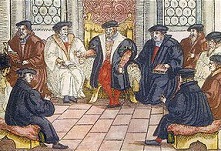





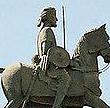
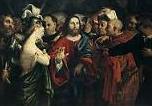
1529 100K+ die of the sweating sickness in London, Lubeck, and Hamburg; France is spared. On Feb. 21-Apr. 22 the Second Diet of Speyer (Spires) attempts to set aside the judgment of the first Diet and outlaw the Reformation in the Holy Roman Empire; on Apr. 19 the term "Protestant" emerges when the Minority Decision of Protest is signed by six Lutheran princes and 14 free cities of the empire, it declares that decisions of conscience in religious matters are between an individual and God - sounds like they're talking about abortion? On Mar. 7-9 imam Ahmad ibn Ibraham al-Ghazi Gragn ("left-handed") (the Conqueror) (1507-43) of Adal in N Somalia launches the bloody Ethiopian-Adal War (Futuh al Habash) (Conquest of Abyssinia) (ends 1543) for the Muslim sultanate of Adal in the N Horn of Africa, using Ottoman-supplied cannons and a largely Somali army equipped with matchlocks to win the Battle of Shimbra Kure against emperor (since Aug. 13, 1507) Dawit II (Lebna Dengel), suffering such heavy losses that he withdraws for two years before returning and occupying two-thirds (three-fourths?) of Ethiopia before dying on Feb. 21, 1543, after which his forces withdraw; in 1577 Muhammad Jasa transfers the Ada capital from Harar to Aussa, after which the sultanate (founded 1415) ends in 1559 amid infighting with Afar tribes; after the Ethiopians are supplied with cannons by the Portuguese, the war becomes easier to fight. On Apr. 21 Spanish diplomat Gonzalo Fernandez comes to Ireland to visit the Earl of Desmond in Dingle, who requests the Spanish king to supply him with a small fleet of four large 200-ton ships and six smaller ones with cannons along with 500 Fleming soldiers to fight the pesky English Protestants, which he reduces to just the artillery after being asked what signal service he had done to justify it. On May 6 Mughal emperor Babar scores another V at the Battle of Gogra (Ghaghra). On May 29 the Penon (Peñón) of Algiers Fortress is taken from the Spaniards and their Kabyles allies by Hayreddin Barbarossa; the Ottomans expel Spain from Algeria. On June 29 Pope Clement VII and HRE Charles V conclude a treaty by which the HRE agrees to reinstate the Medicis in Florence, and on Oct. 24 an imperial and Spanish army under Philibert of Chalon, Prince of Orange (1502-30) and Pier Maria III de' Rossi sieges Florence (ends Aug. 10); Michelangelo Buanarroti is put in charge of the defense of the bell tower of San Miniato al Monte, hanging mattresses from it to protect against cannon fire, giving rise to the saying go to the mattresses? On July 26 after wowing HRE Charles V with trinkets brought from Peru, the queen's Capitulations of Toledo authorize Francisco Pizarro to proceed with the conquest of Peru, renamed New Castile, with the right of discovery and conquest for a distance of 200 leagues S of the Gulf of Guyaquil, along wth the office of adelantado (gov.) and capt.-gen.; Diego de Almagro is given command of the fort of Tumbes, and Hernando de Luque is named its bishop. In July papal legate Cardinal Campeggio announces that the whole matter of the royal divorce case must be referred to Rome for the pope's personal adjudication; two days after he departs for Rome in Aug., useless fall-guy Cardinal Wolsey is tried and convicted of exceeding his authority as a papal legate and deprived of his seals as lord chancellor by none other than Charles Brandon, 1st duke of Suffolk, whose neck he had saved back in 1515 over his treasonable marrige to Henry VIII's sister, to whom Wolsey utters the soundbyte "If I, simple Cardinal, had not been, you should have had at this present no head upon your shoulders wherein you should have had a tongue to make any such report in despite of us"; as well as all official posts and honors except for the archbishopric of York, to which he retires after his right-hand man Thomas Cromwell leads the opposition to an attempt in Parliament to pass a bill of attainder against him; on Oct. 25 Sir Thomas More is made lord chancellor (until 1532), becoming the first layman to hold the post; in Oct. Henry VIII summons the English Reformation Parliament, which sits for seven year (until 1536); Thomas Cromwell survives his dismissal in spades, becoming Henry VIII's right-hand man and showing his stuff by gathering all the grievances of the English people against the privileged Catholic Church into a list, and going on to manage the dissolution of the monasteries; Sir Thomas Howard, 3rd duke of Norfolk becomes pres. of the king's council; the pope adjourns the commission to consider Henry's annulment to Rome, which is a V for Catherine; Cambridge U. divine Thomas Cranmer suggests to Henry VIII that he need not wait for Rome to annul his marriage, but might refer the question of his marriage to the divines of the univs.; the happy king appoints him archdeacon of Taunton, a royal chaplain, and gets him a post in the household of Anne Boleyn's father Sir Thomas Boleyn, now the earl of Wiltshire. On Aug. 5 the Treaty (Peace) of Cambrai (Ladies' Peace) (Ladies' Charter) (Paix des Dames), negotiated by HRE Charles V's aunt Margaret of Austria and Francis I's mother Louise of Savoy, duchess of Angouleme is signed in Cambrai in N France; Francis I pays 2M crowns and renounces his claims on Italy (Naples), Flanders and Artois; Charles V promises not to press his claims on Burgundy for the time being, and releases the French prince POWs; Venice, Florence, and the pope are left along against Charles V; Francis I marries Charles' sister Eleanor. On Oct. 1-4 Roman Catholic Church dropouts Martin Luther and Ulrich Zwingli meet at the Marburg Colloquy in Marburg, Hesse, but don't quite see eye to eye over the thorny issue of consubstantiation vs. transubstantiation, i.e., whether the sacramental bread and wine are totally substantively converted into the body and blood of Christ, or whether the body and blood of Christ are substantively present with the unchanged eucharistic bread and wine; and let's not forget impanation, where the union is only mystical - this Christ he's quite a fellow? On Oct. 23 Nostradamus re-enrolls at Montpellier to obtain his doctorate in medicine. Swinging Ulrich Zwingli converts six of 11 Swiss cantons to the Reformation, the remaining five Forest (Rural) Cantons form an alliance with Austria to move against them, causing them to form their army and civil war to loom, later known as the Milk Soup War (First War of Kappel) because they end up basically agreeing that fighting over religion isn't worth it? The Ottomans invade Hungary, and John Zapolya (John I) emerges from hiding in the Carpathians and defeats Ferdinand's army, then surrenders to Sultan Suleiman I, who confirms his crown; the Ottomans begin a siege of Vienna in the fall, but are unsuccessful and retreat - the first time they show that they can be beaten? Hamburg goes Lutheran, receiving refugees from the Netherlands and France. After HRE Charles V repeays a loan by giting them the colony of Venezuela (Klein-Venedig), colonists sent by the Welsers of Augsburg establish a govt. in Venezuela, with Ambrosio Alfinger (1500-33) (of the wonderful German Welser banking family, which strong-fingered its way in via banking debts) as gov., which treats natives like manure while sending expeditions along the Orinoco and into the Andes searching for the fabled El Dorado and gold, gold, gold. Nuno de Guzman becomes first pres. of the audiencia of New Spain, and conquers the Chichimeca region N and W of Mexico City, incl. Jalisco and Sinaloa. Francisco de Montejo begins the conquest of Tabasco (until 1540). James V ousts pro-English Archibald Douglas, 6th earl of Angus as Scottish chancellor, and replaces him as warden of the East March by George, 4th Lord Home (-1549), then ousts Archibald Douglas of Kilspindie, giving his position of keeper of the privy seal to George Crichton (-1543), bishop of Dunkeld ("He is said to have thanked God that he knew neither New or Old Testaments") (to whom Pope Alexander VI presented the 300-lb. brass eagle Dunkeld Lectern in 1530), and his position as provost of Edinburgh to Robert Maxwell, 5th Lord Maxwell (1493-1546); both Douglases are exiled to England; already a big squirt, the 17-y.-o. king (whose daddy died in 1513 flodden his bishop?) goes on to father seven bastards by six mistresses, making use of fear of Scottish conversion to Protestantism to blackmail the pope and Scottish church hierarchy into giving him £72K up front and then appoint his royal bastard infants to head positions at the abbeys of Kelso, Melrose, and Holyrood, and the priories of Piteenweem, St. Andrews, and Coldingham in order to get his hands on their great wealth, making his daddy James IV's ghost proud of his little boy? Bernardino de Sahagun founds a Franciscan mission in Mexico - bakes great chocolate chip cookies? Jean Clouet (1480-1541) becomes court painter to Francis I. Michelangelo designs fortifications in Florence. Cambridge preacher Hugh Latimer gives two Sermons on the Card, tolerating the use of playing cards by Christians; by modern times they have it all figured out: Ace=God, Deuce=New and Old Testaments, Trey=Trinity, Four=Four Gospels, Five=The Five Wise Virgins (out of 10), Six=#Days God Created the Earth In, Seven=Day God Rested, Eight=#Worthy People Saved in the Flood, Nine=#Lepers (out of 10) Who Didn't Thank Jesus for Being Cured, Ten=Ten Commandments, King=Father, Queen=Mary, Jack=Devil or Son; #spots on all cards = 365 (#days in year); #cards in deck = 52 (#weeks in year); #suits = 4 (#seasons); #face cards = 12 (#months), #tricks = 13 (a quarter year). Women go on stage for the first time in Christian Italy. Architecture: Duke Alfonso I d'Este of Ferrara builds the Chamber of Alabaster to house his top collection of magnificent paintings in white marble walls with a gilded ceiling. Science: Italian humanist physician Giovanni Battista da Monte (Johannes Baptista Montanus) (1498-1551) introduces clinical sickbed examination of patients at the U. of Padua - is there a doctor in the padded house? Nonfiction: Anon., Kunst und Recht Alchemei-Buchlein (Worms); alchemy manual. Henricus Cornelius Agrippa von Nettesheim (1486-1535), Declamation on the Nobility and Preeminence of the Female Sex; attempts to prove the superiority of women. Guillaume Bude (1467-1540), Commentaries on the Greek Language (Commentarii Linguae Graecae); revives the study of ancient Greek lit. in France - keeps you glued to your seat? Baldasare Castiglione (1478-1529), How to Achieve True Greatness. Ludwig Hetzer and Hans Denck, The Worms Bible; introduction dated Apr. 13, 1527; the first complete Bible translation of the Reformation, by two Anabaptists, beating Luther by five years; goes through 17 eds. Martin Luther (1483-1546), Large Catechism (Apr.) (short sermons on articles of faith); Short Catechism (Q&A form for children). Gian Giorgio Trissino (1478-1550), Castellano; proposes the Italian letters I/J and U/V. Art: Albrecht Altdorfer (1480-1538), Battle of Alexander. Lorenzo Lotto (1480-1556), Christ and the Woman Taken in Adultery. Bernardino Luini (1475-1532), The Passion and the Last Supper (Santa Maria degli Angeli, Lugano). Music: Martin Luther (1483-1546), A Mighty Fortress Is Our God (1527-9); based on Psalm 46. Plays: Antonio Telesio, Imber Aureus; mythological tragedy. Novels: Antonio de Guevara (1481-1545), Reloj de Principes (Valladolid) (first work); a didactic novel about the life of Roman emperor Marcus Aurelius; becomes an internat. hit. Births: German duke of Saxony (1554-95) John (Johann) Frederick II (d. 1595) on Jan. 8 in Torgau; eldest son of John Frederick I (1503-54) and Sybille of Cleves (1512-54). Italian Platonic philosopher-scientist Franciscus Patricius (Francesco Patrizi or Patrizzi) of Cherso (d. 1597) on Apr. 25 in Cherso (Cres), Repub. of Venice (modern-day Croatia); his family allegedly were nobles who were forced to flee Bosnia after the Ottoman takeover; educated at the U. of Padova; student of Bernardino Telesio (1509-88); master of Giordano Bruno; inventor of the 13-syllable versi martelliani verse form. Indian ruler of Vilcabamba Titu Cusi Yupanqui (Don Diego de Castro) (d. 1571); son of Manco Inca Yupanqui. French Huguenot explorer Rene Goulaine de Laudonniere (René Goulaine de Laudonnière) (d. 1574) in Poitou (Sables d'Olonne?). English historian Raphael Holinshed (Hollingshead) (d. 1580) in Cheshire. Italian madrigal composer Bartolommeo Spontone (d. 1586). English politician-courtier Sir Henry Sidney (d. 1586); father of Mary Sidney Herbert (1561-1621); childhood court companion of Edward VI. Spanish physician-psychologist Juan Huarte de San Juan (y Navarro) (d. 1588) in Saint-Jean-Pied-de-Port. English The Bard's father John Shakespeare (d. 1601); son of Richard Shakespeare of Snitterfield (d. 1561); marries Mary Arden (d. 1608), and has sons William (1564-1616), Gilbert (1566-1612), Richard (1574-1613), Edmund (1580-1607), and daughters Joan (1558-58), Margaret (1562-62), Anne (1571-9). Flemish Mannerist sculptor (in Italy) Giambologna (Jean Boulogne) (Giovanni Bologna) (d. 1608) in Douai (modern-day France); student of Jacques du Broeucq; moves to Italy in 1550, and florence in 1553. Deaths: German sculptor Peter Vischer the Elder (b. 1460). English poet-dramatist John Skelton (b. 1460). Italian sculptor Andrea Sansovino (b. 1467). Spanish dramatist Juan del Encina (b. 1469). Chinese philosopher Wang Yang-ming (b. 1472). Italian writer-diplomat Baldasare Castiglione (b. 1478) on Feb. 2 in Toledo, Spain. German papal nuncio Karl von Miltitz (b. 1490) on Nov. 20 near Gross-Steinheim (accidentally drowns). African king Askia Mohammed Toure (b. ?) of Songhay (W Sudan).